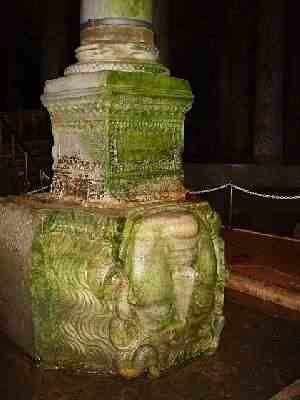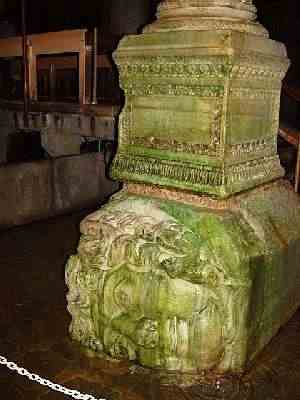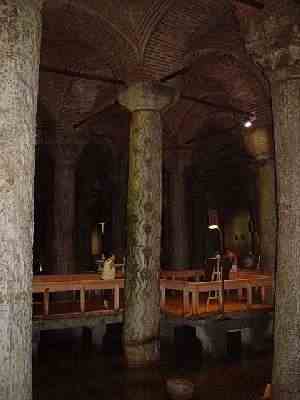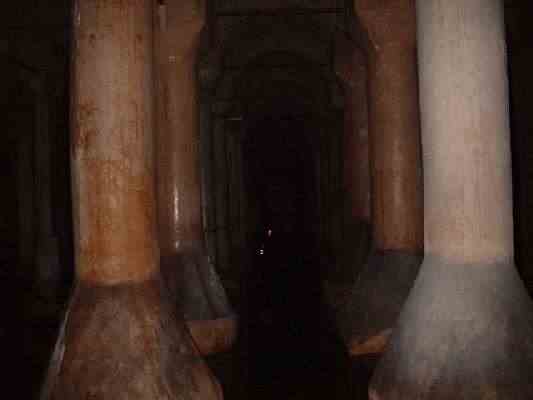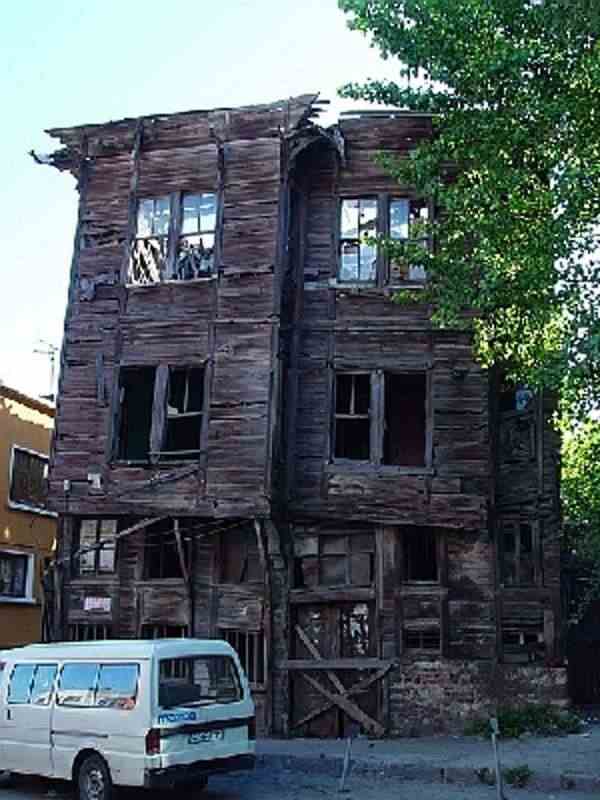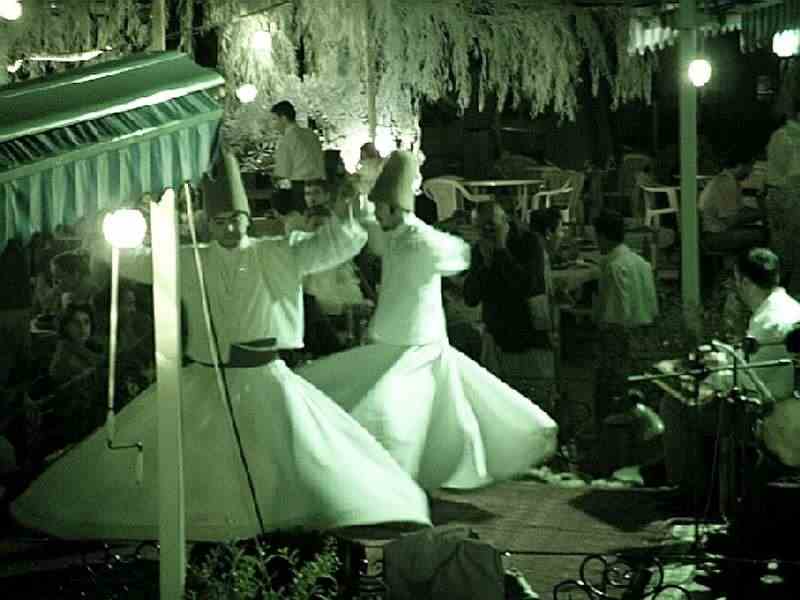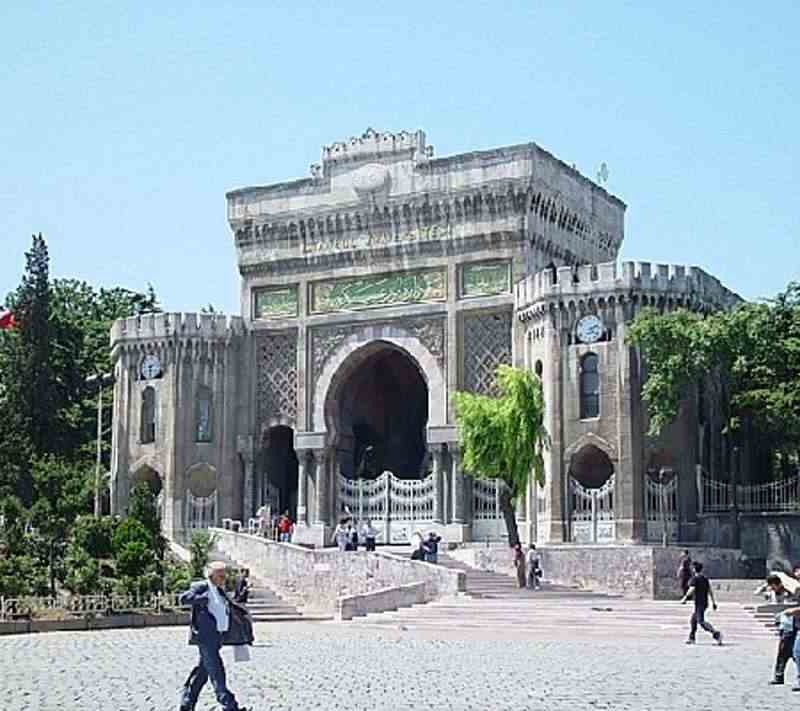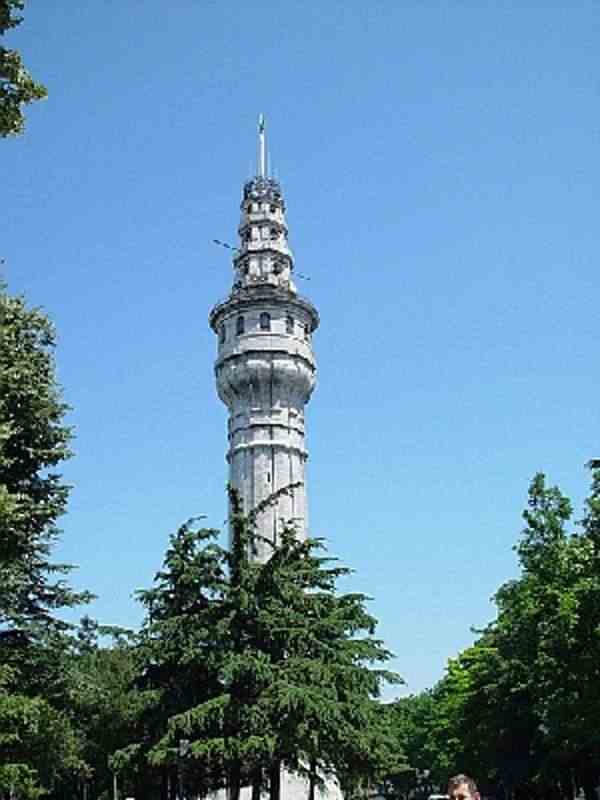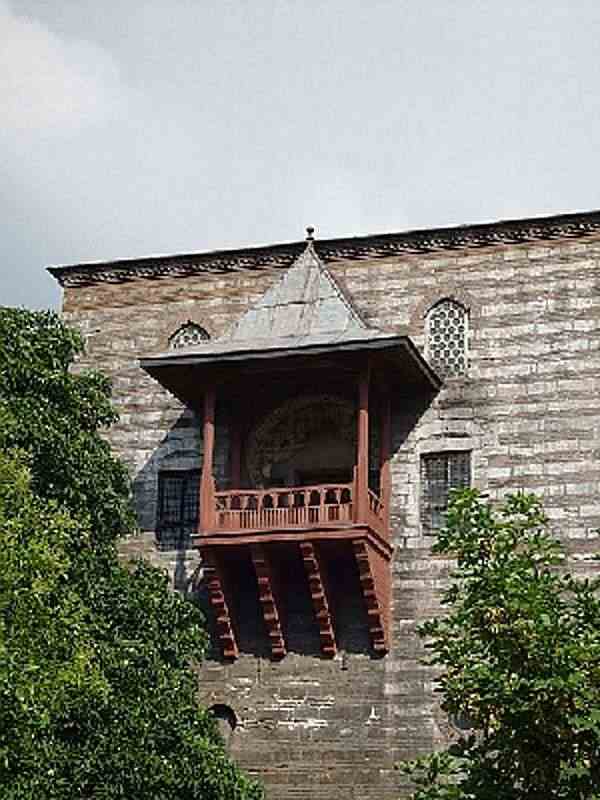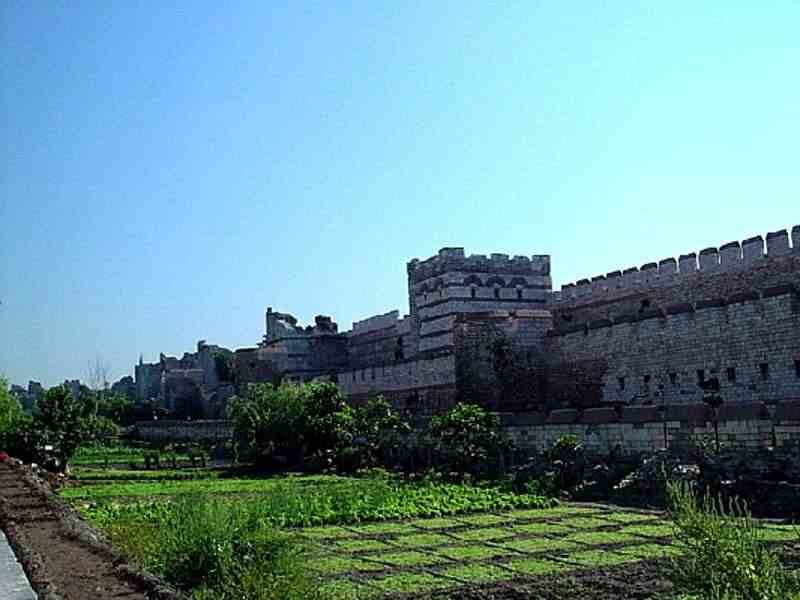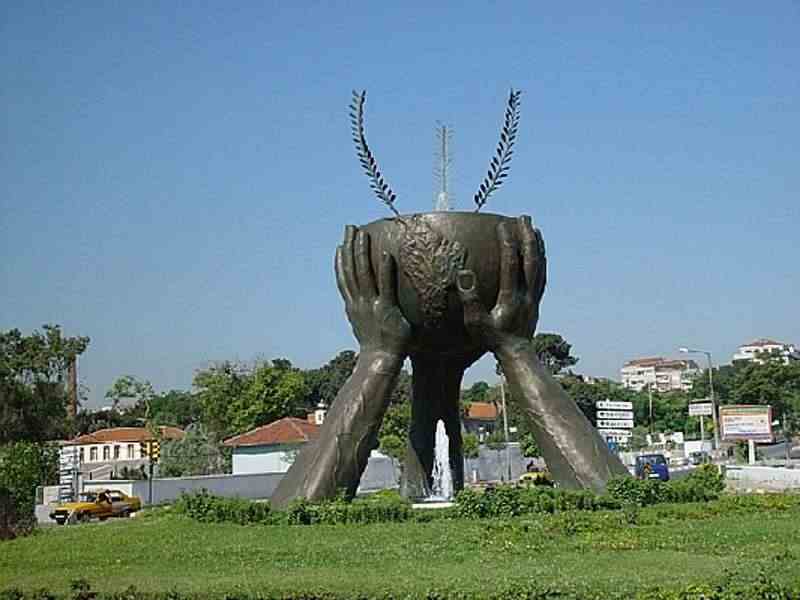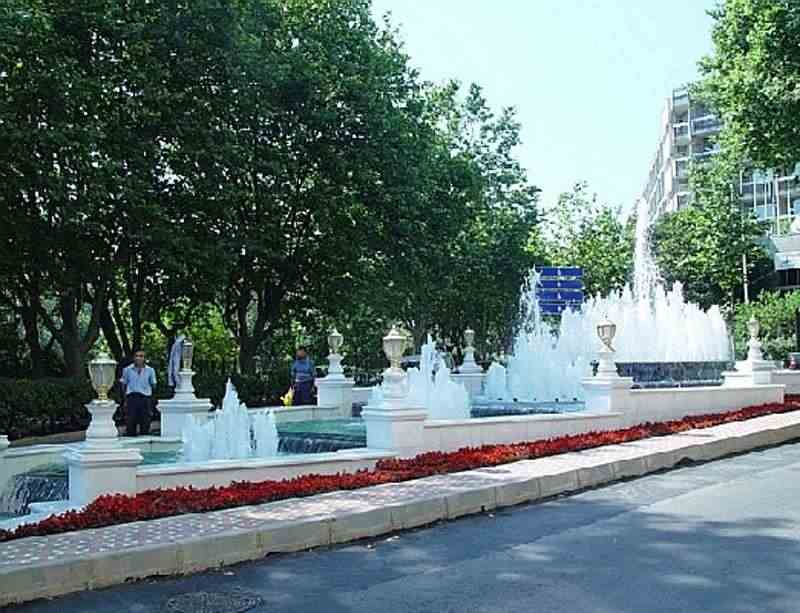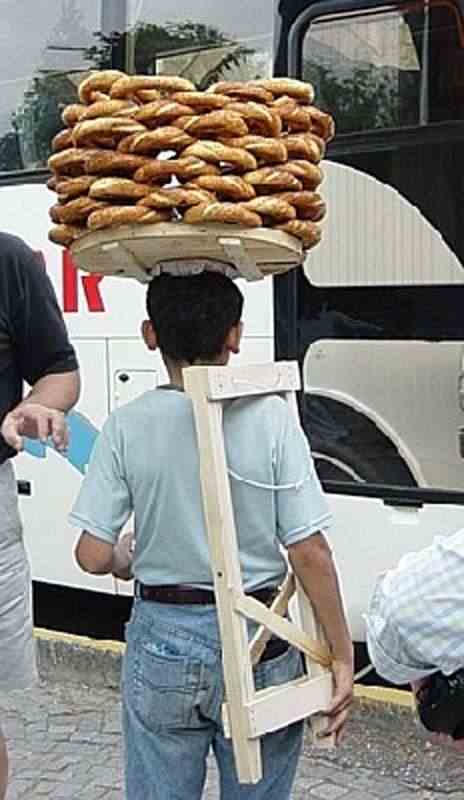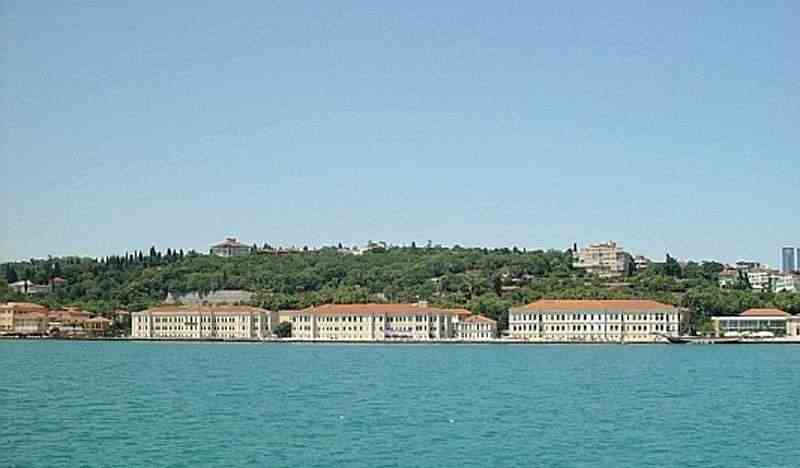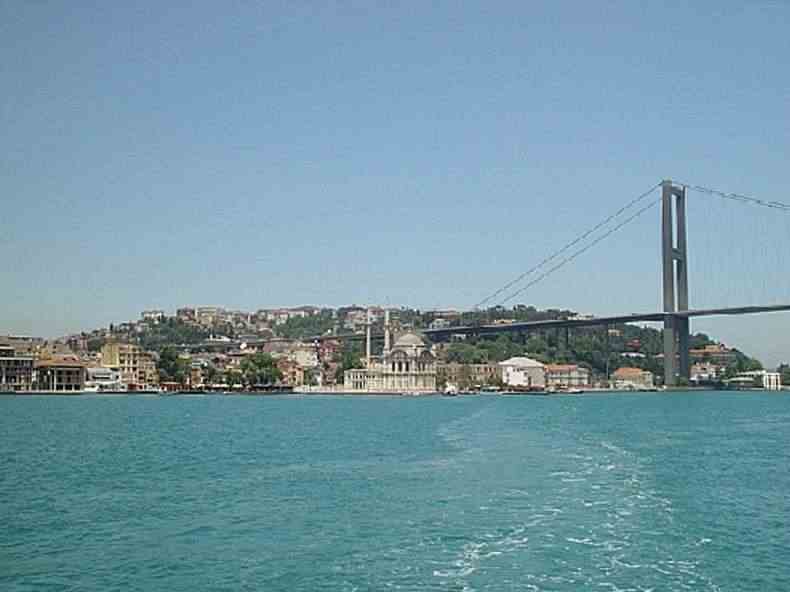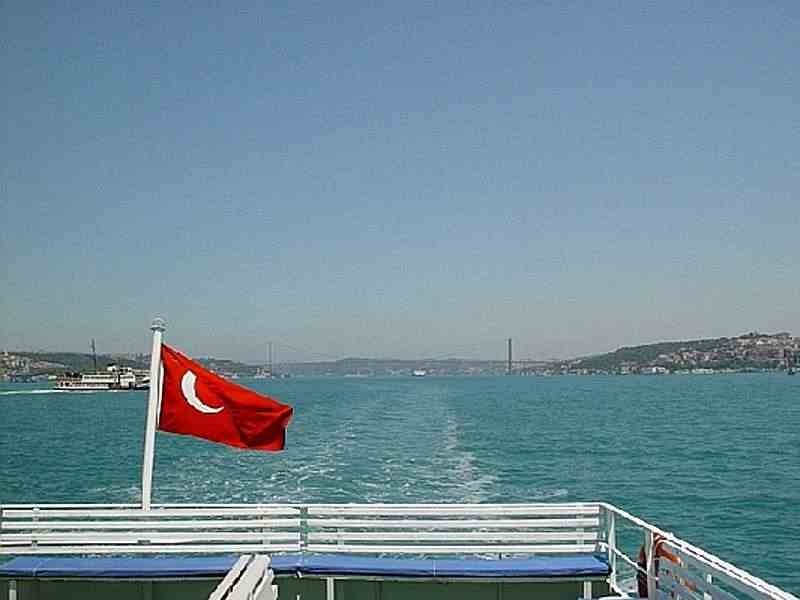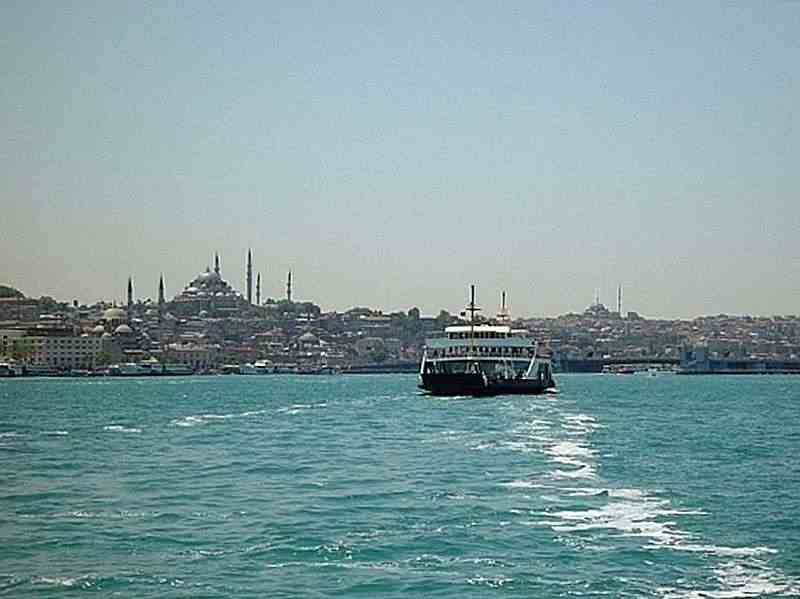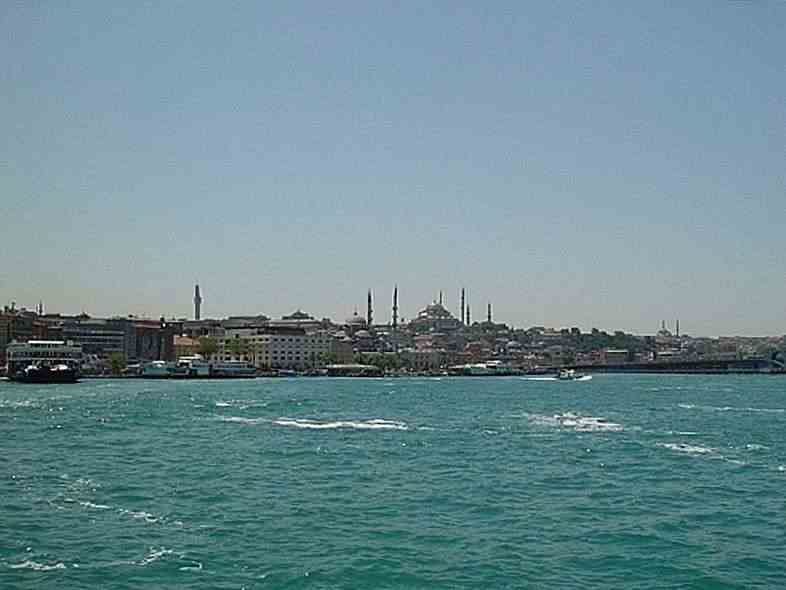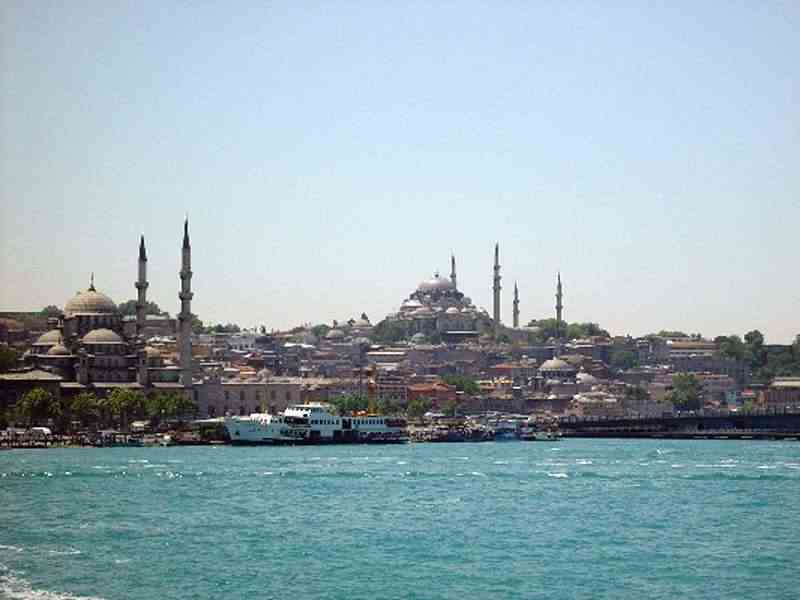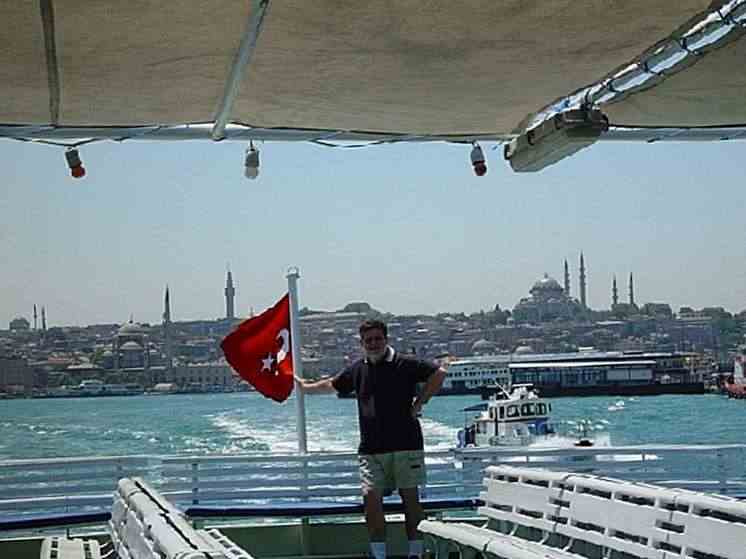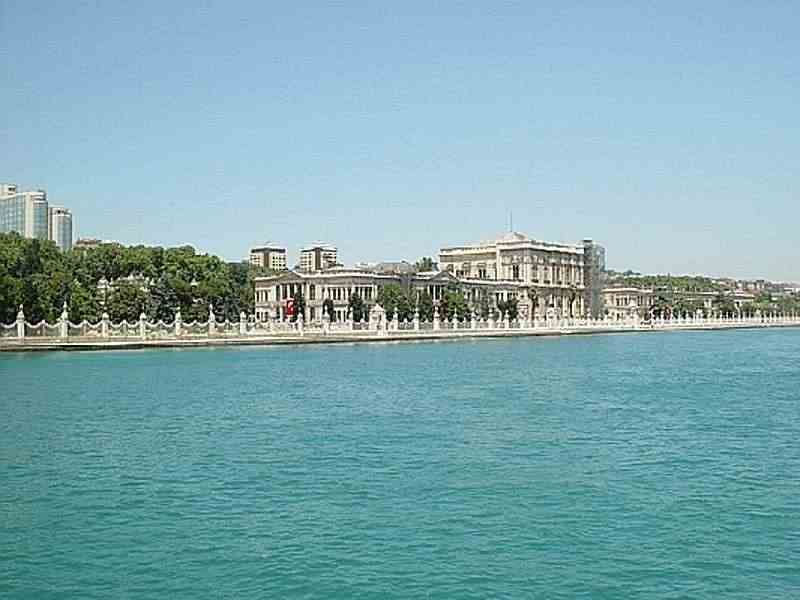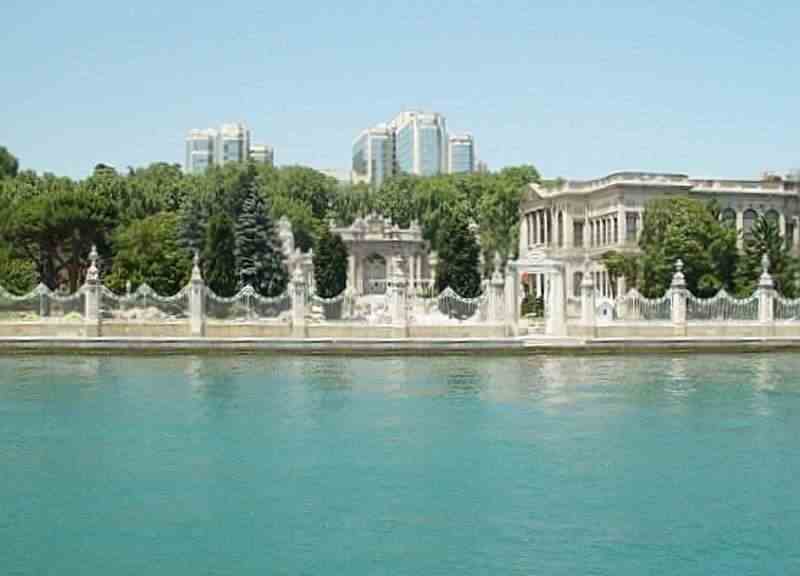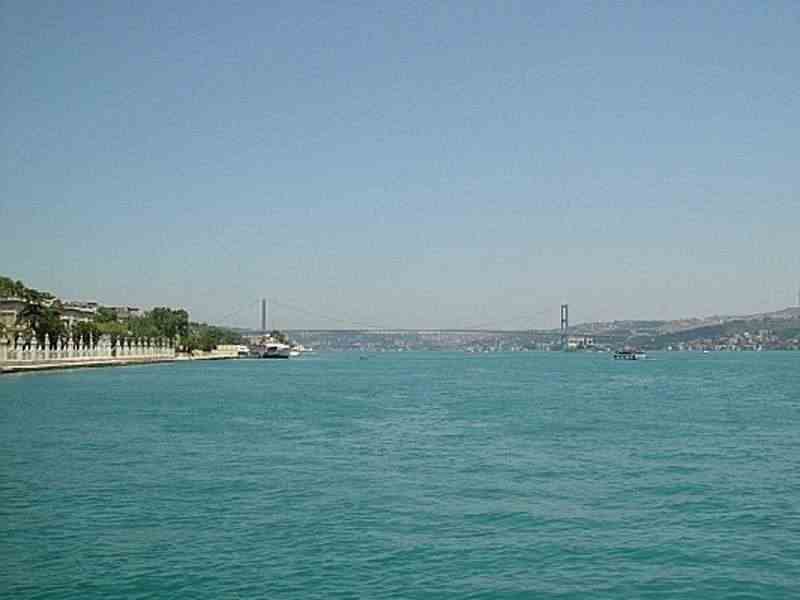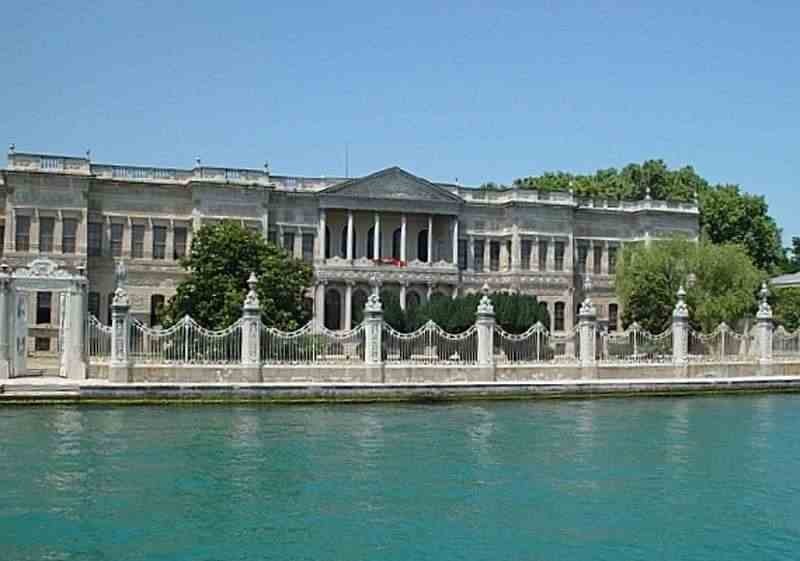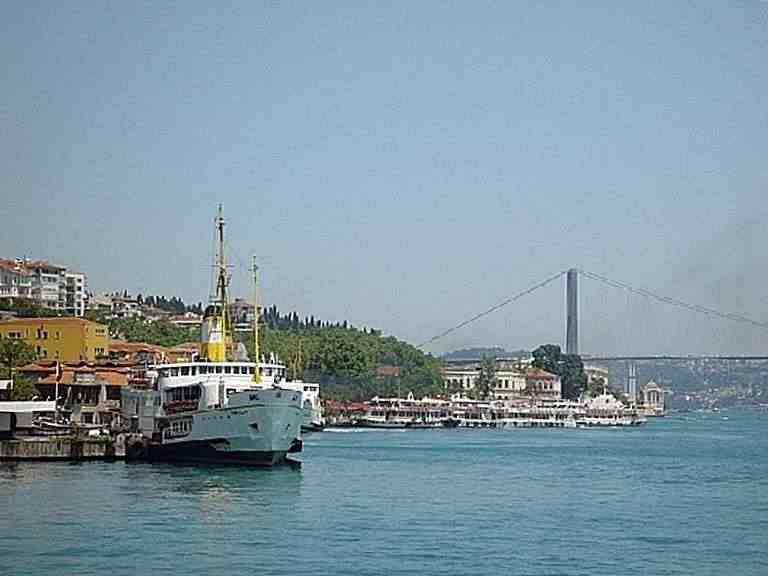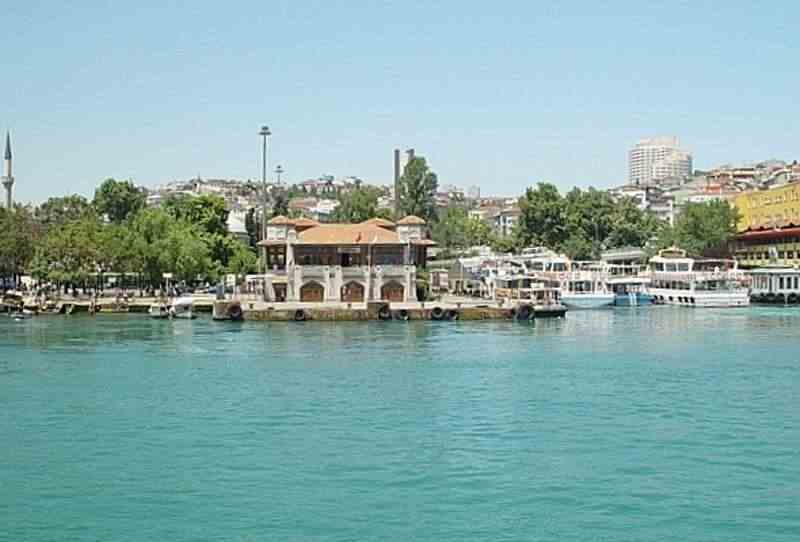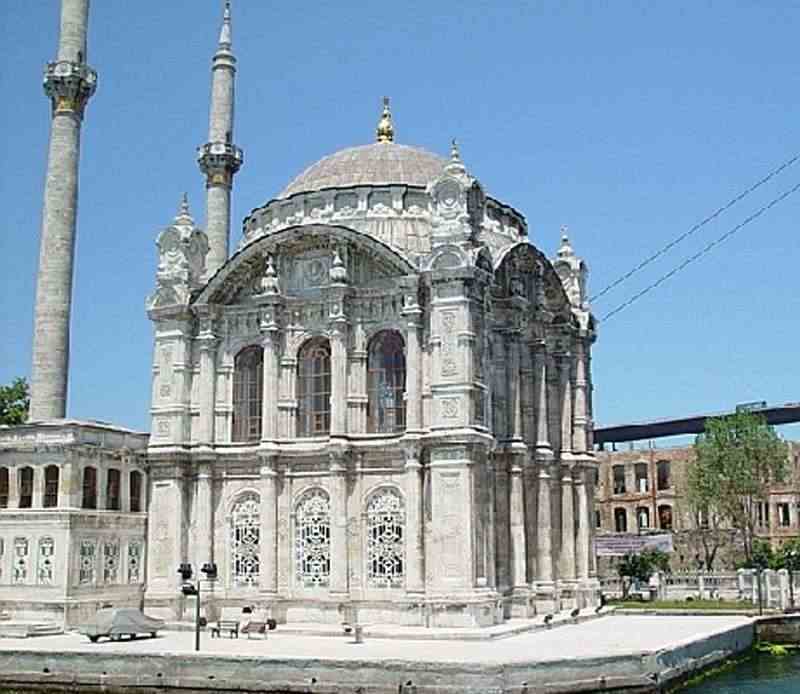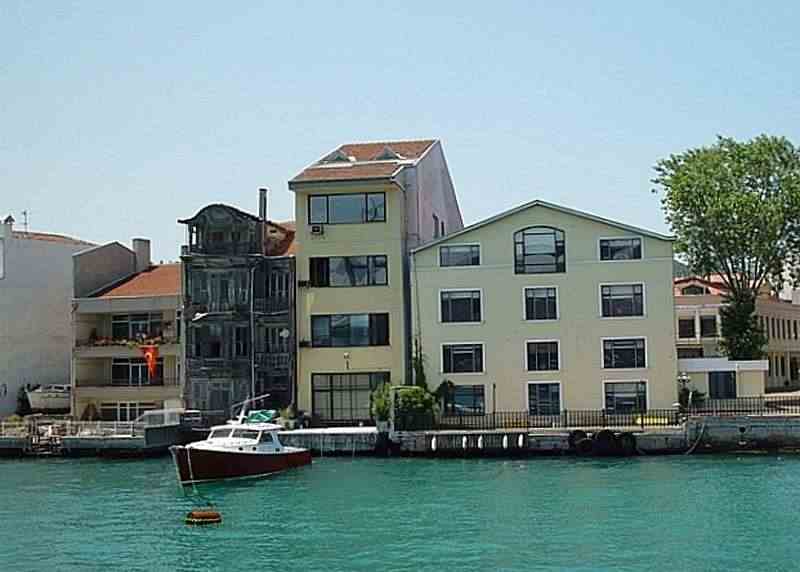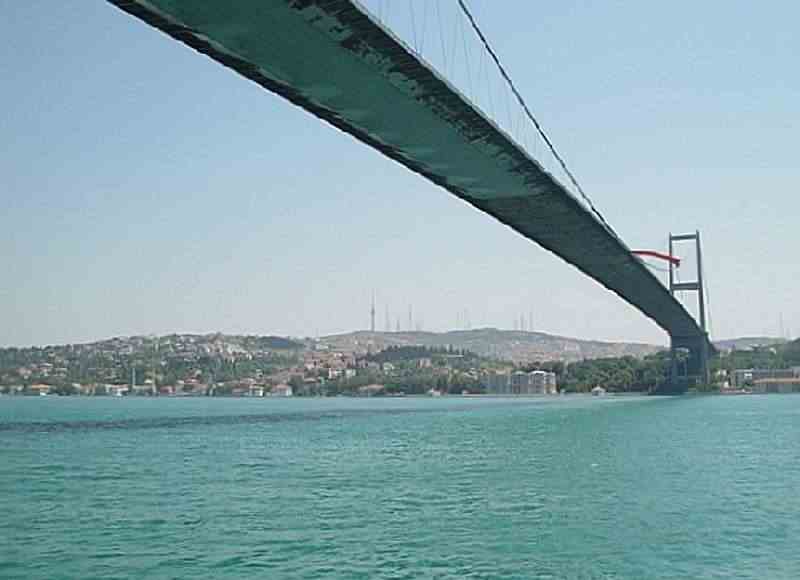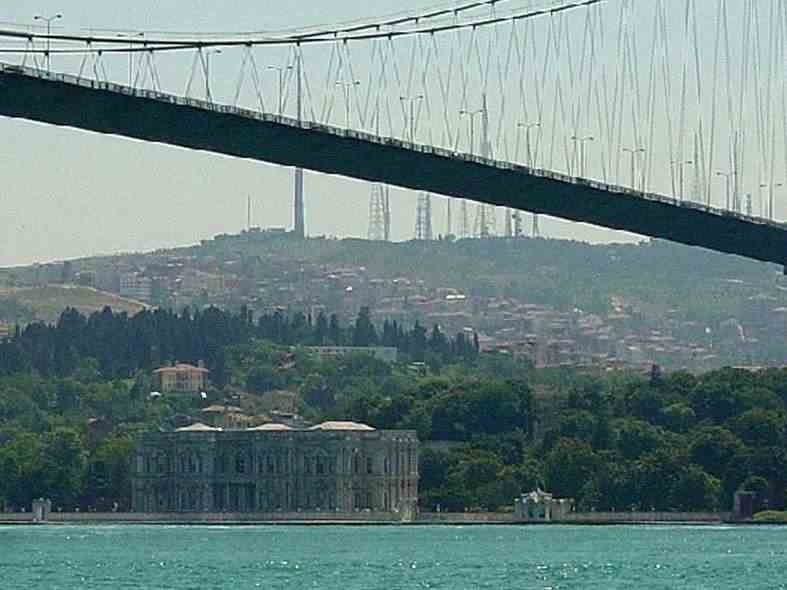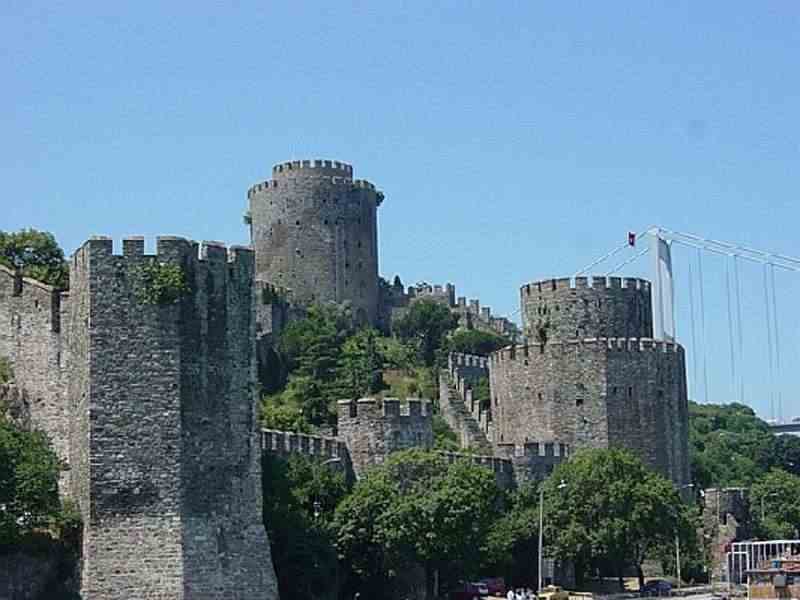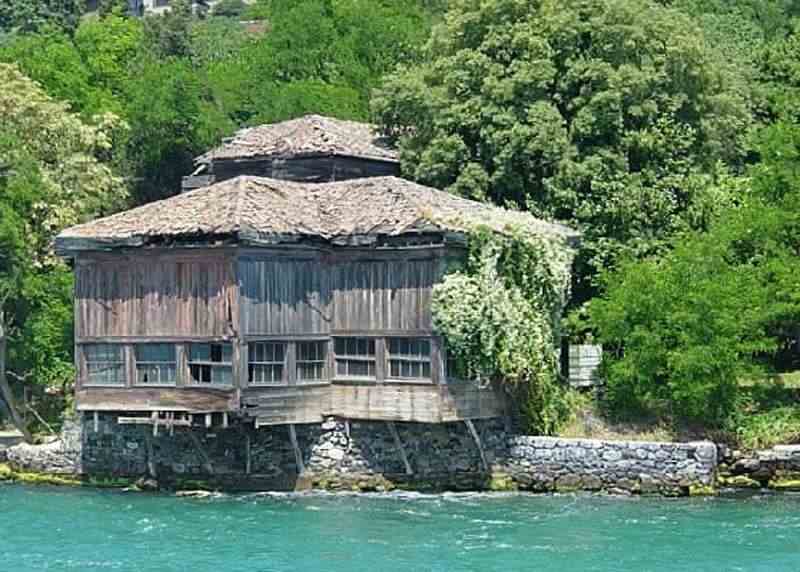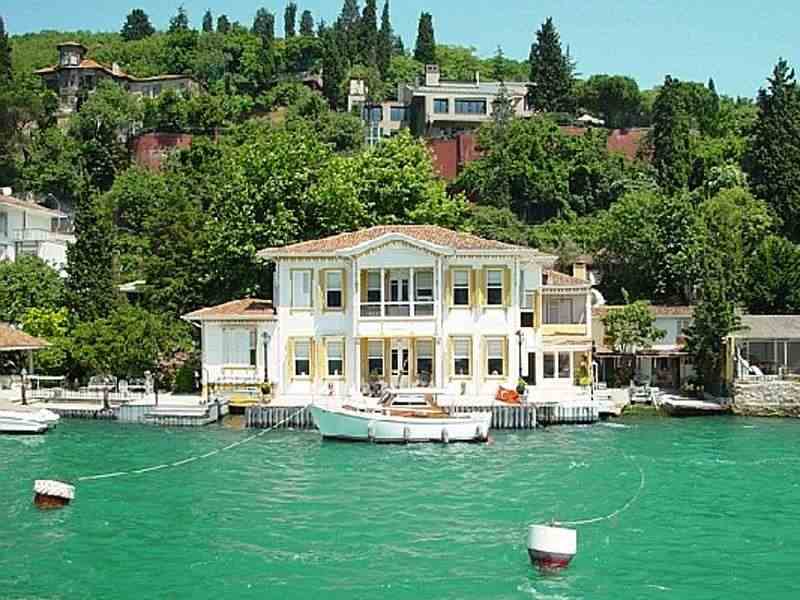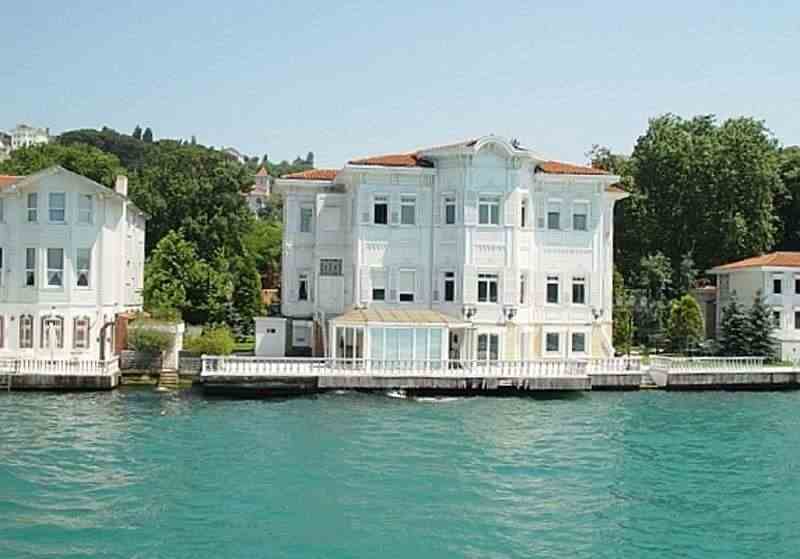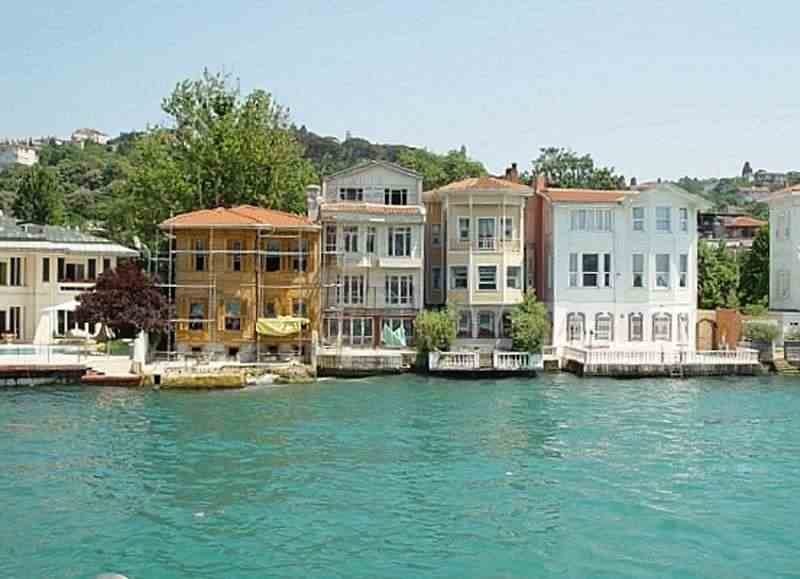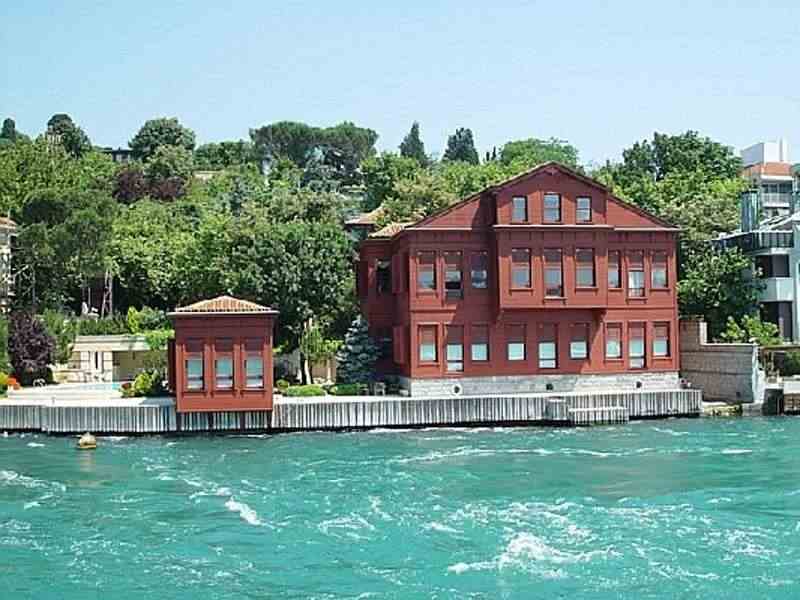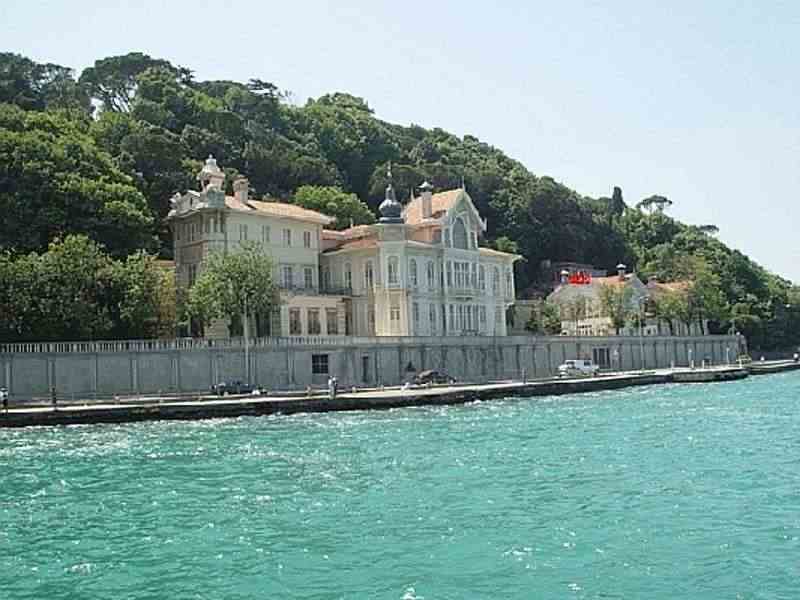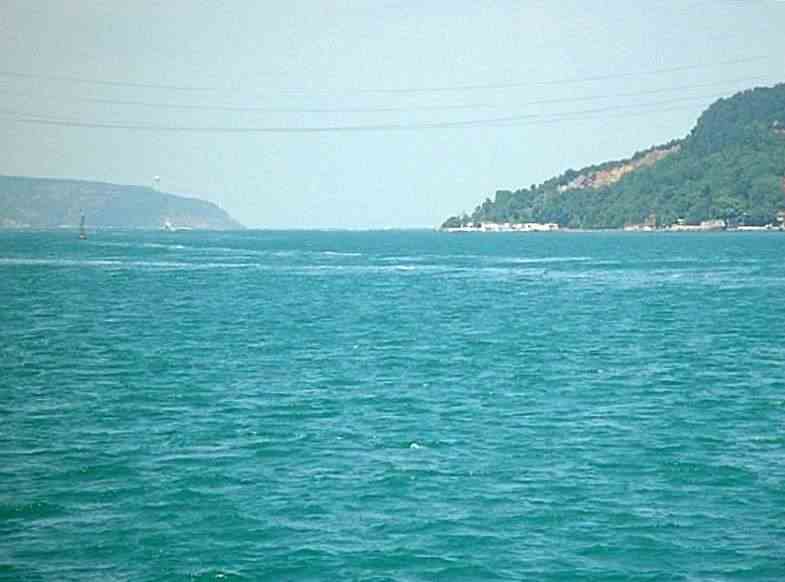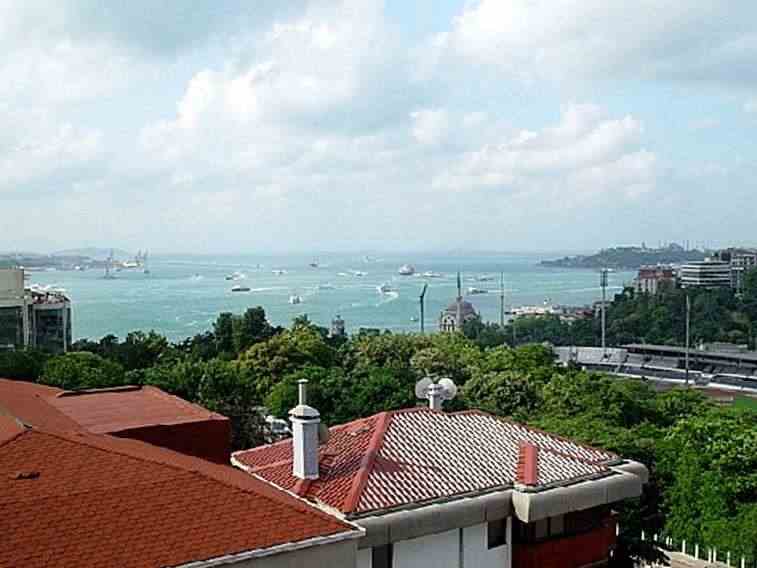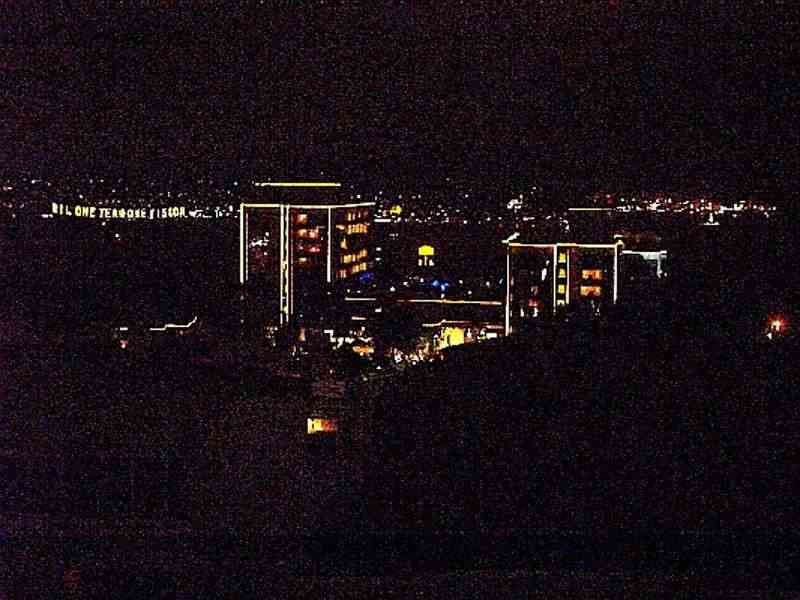With an around the world air ticket, we flew out of Melbourne on the 10th of May to Vancouver in Western Canada.
Next flight was to Calgary then we flew over the North Pole to Frankfurt
in Germany where we went on a Trafalgar Highlights of New Europe tour.
(Frankfurt to Berlin, Poland, Slovakia, Hungary, Austria, The Czech Republic and Rothenburg before returning to Frankfurt.)
After this tour we flew to Istanbul in Turkey and went on a Trafalgar tour of Turkey.
Then to Singapore via Dubai and back to Melbourne after 54 days.
From Frankfurt in Germany we flew to Istanbul for our tour of Turkey.
For many people it is their most favourite city in the world.
We can see why. We loved it.
We had 3 days to explore Istanbul before ourTurkey tour began.
First known as Byzantium
(after Byzis), Istanbul dates from at least 660BC.
Its name was changed to
Constantinople after the Emperor in 330AD and became the
capital of The Holy Roman Empire.
The
Mosque of
Sultan Ahmet 1 - The Blue Mosque.
The mosque was built between 1609 & 1616.
It is
beautiful inside - the blue luminous impression is created by the tiled
walls and the lovely blue windows. Massive pillars support the dome.

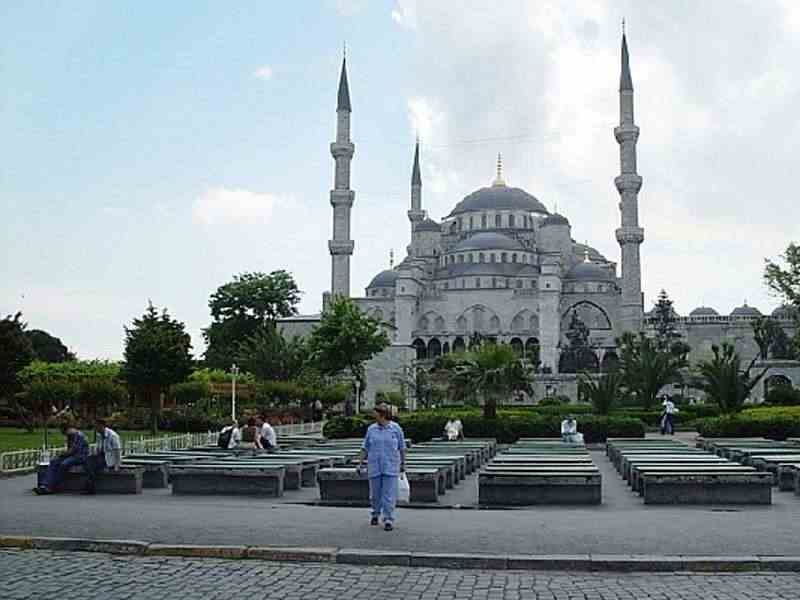

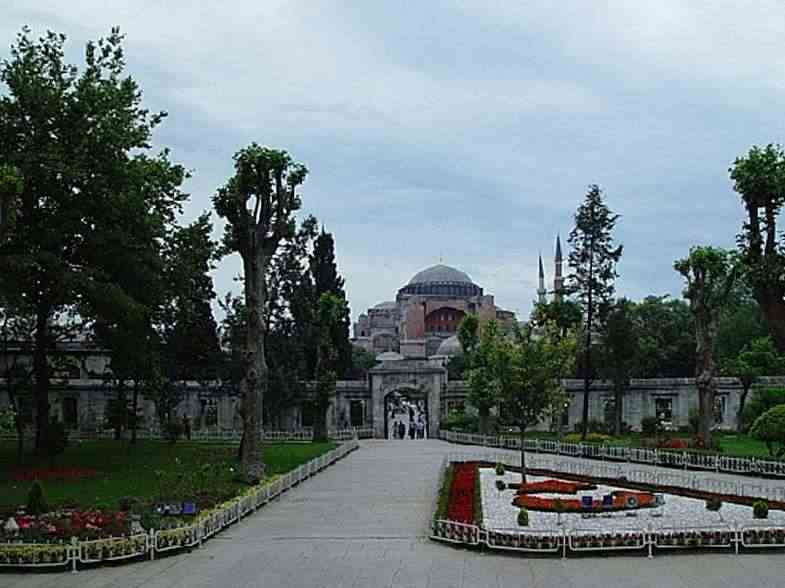

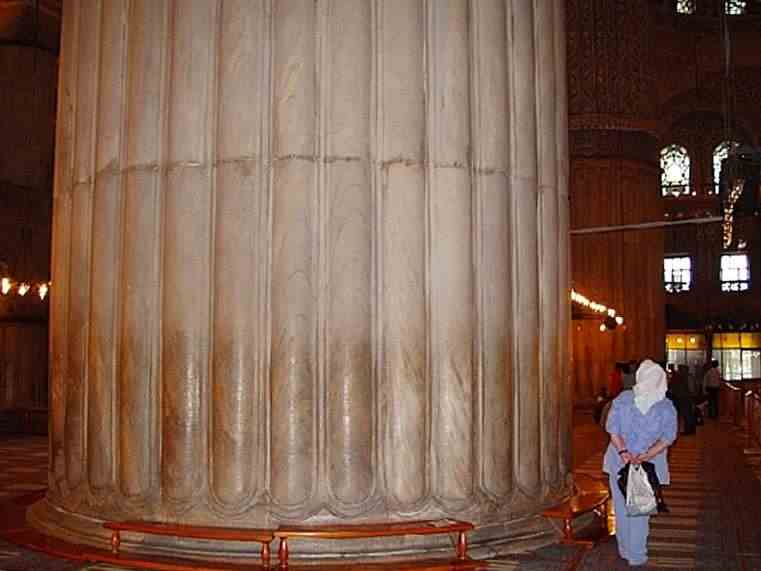

Some of the beautiful windows which give The Blue Mosque its blue luminous impression.
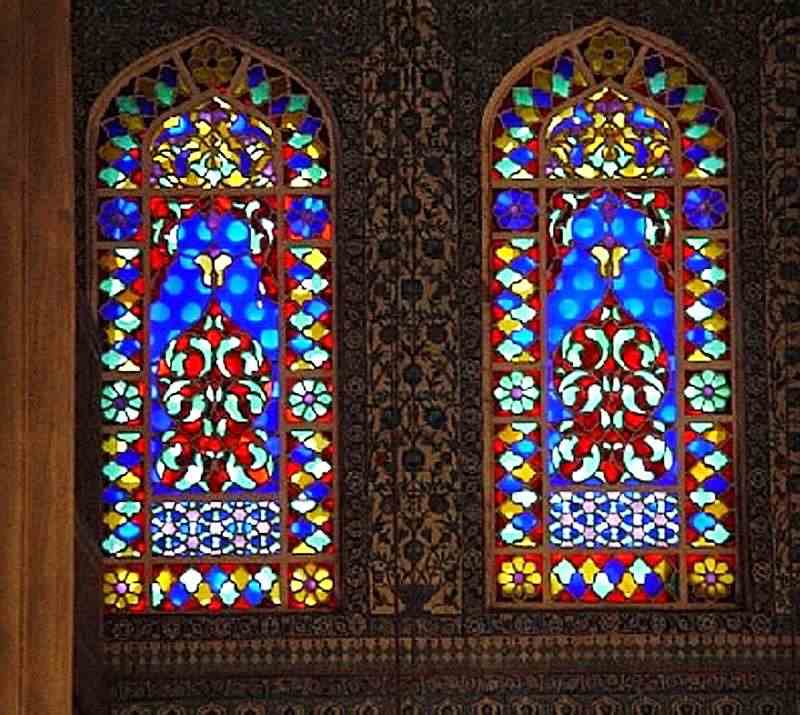
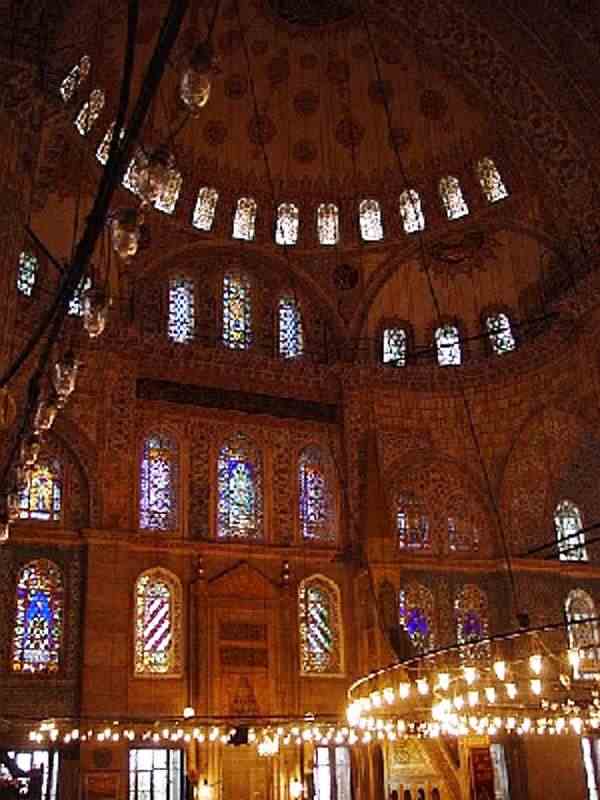
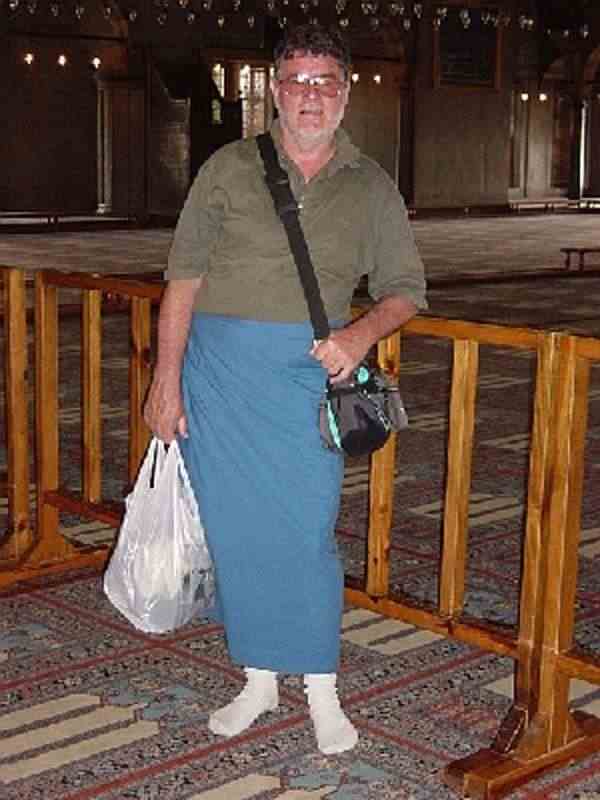
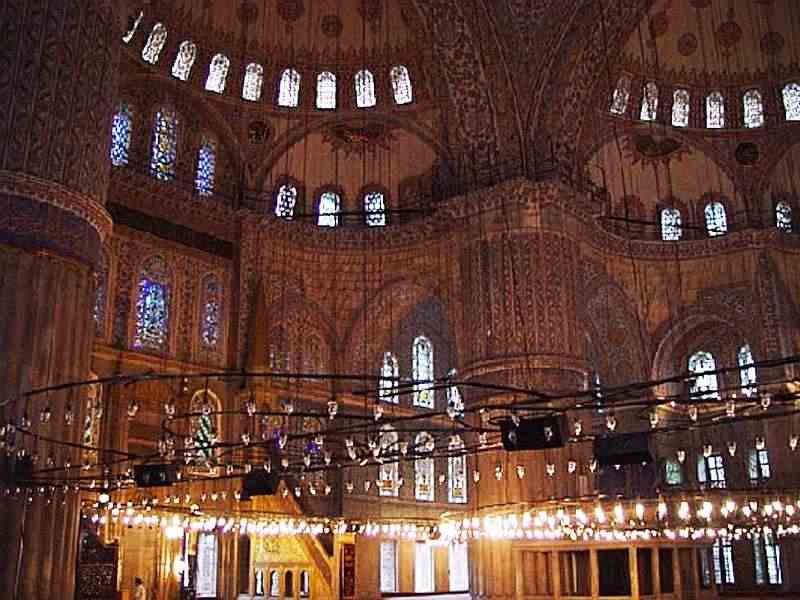
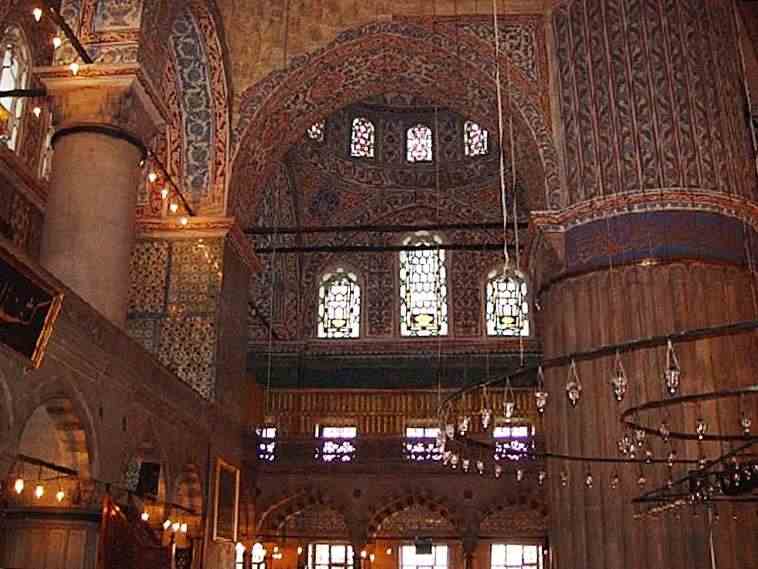
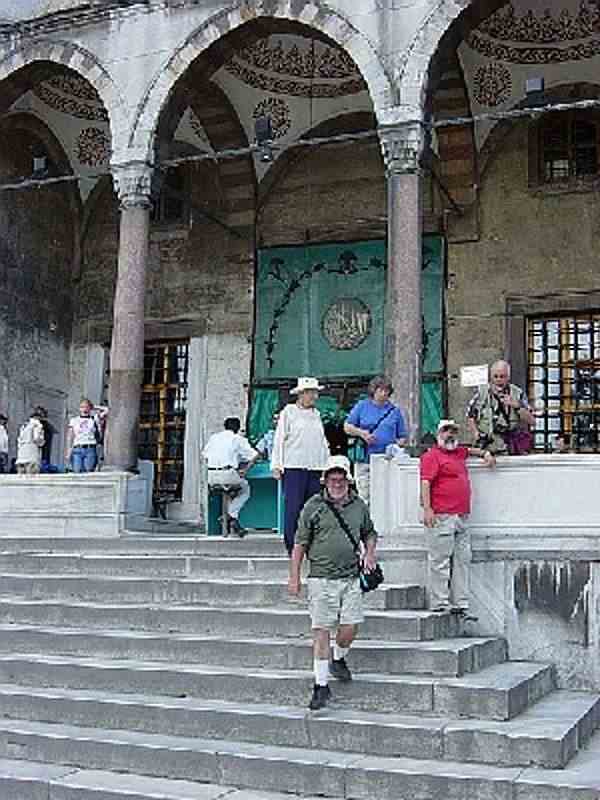
A chain across one of the gates of the mosque. Its purpose was to cause horse riders to dismount before entering the precincts of the mosque.
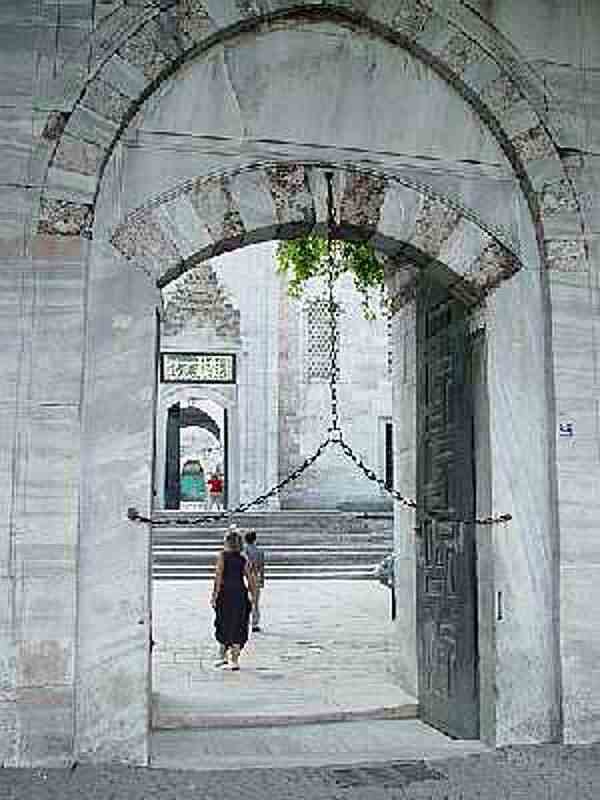

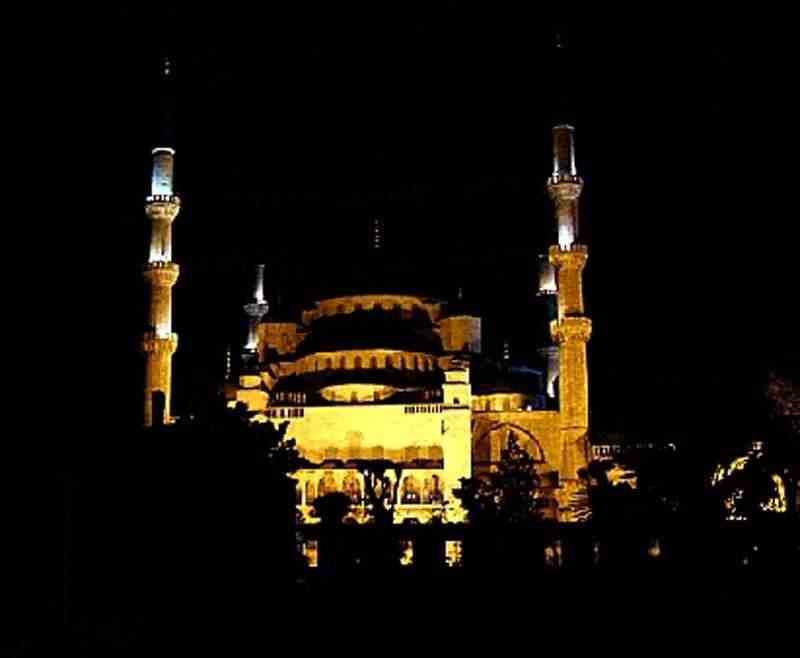
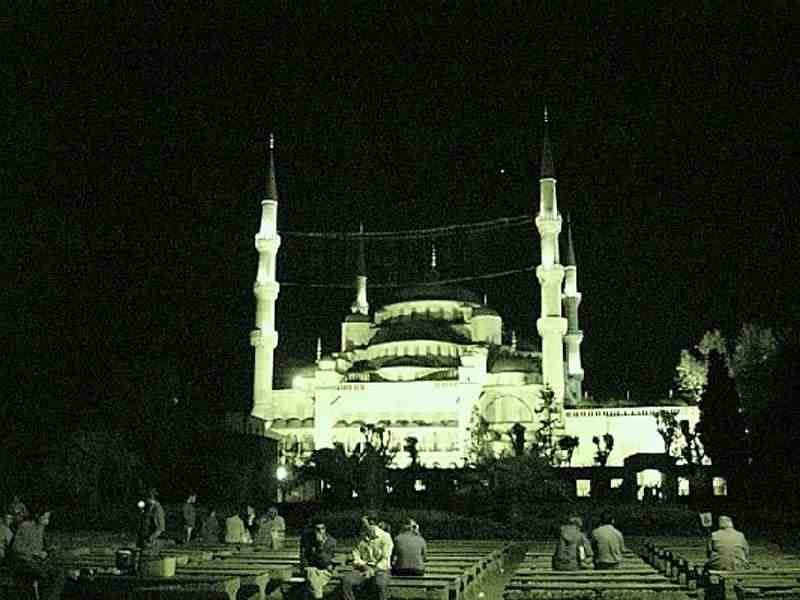

Outside the Blue Mosque is The Hippodrome where chariot races & Bzyantine riots took place.
There are 2 obelisks here - one from Karnak and a rough one which once was covered in brozne that was stolen by the Crusaders

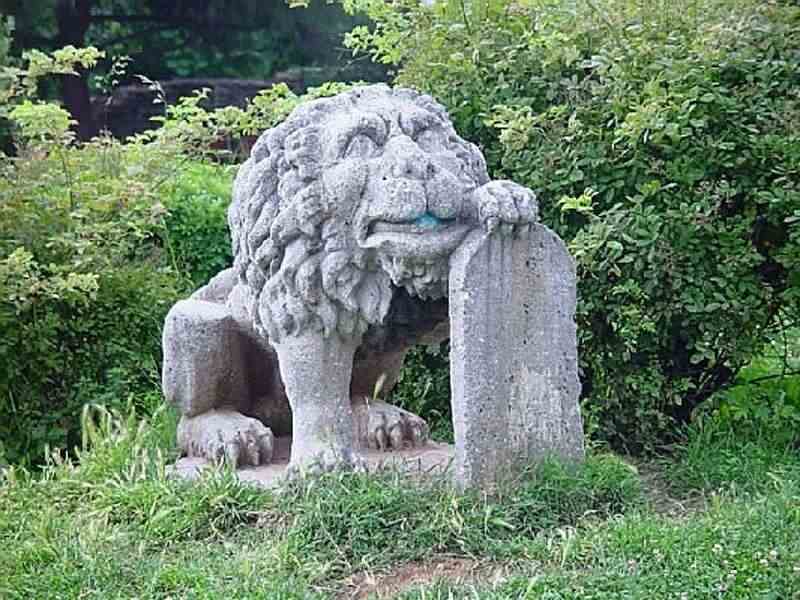
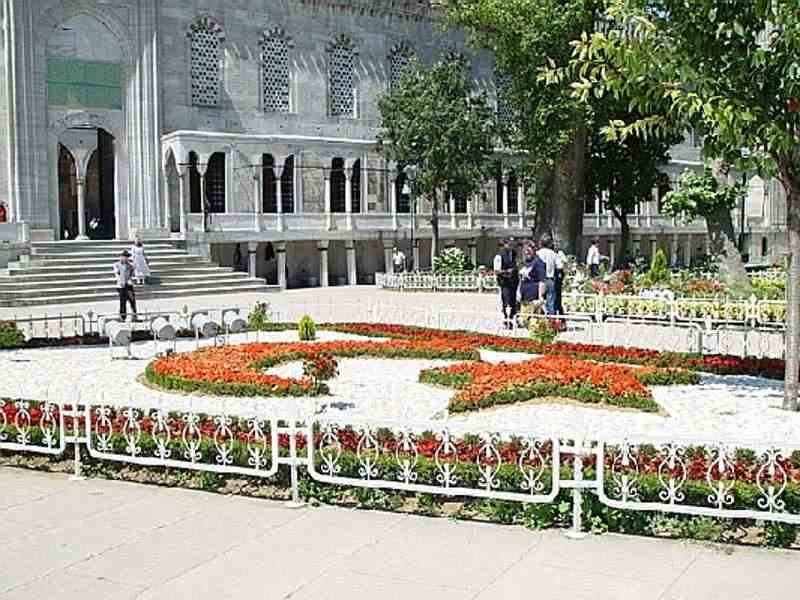
Hagia
Sophia.
The Cathedral of Holy Wisdom in Istanbul.
This 1500 year old church was built from 532 - 537.
It was began under Emperor Justinian and was intended to be the
grandest, finest church in the world.
For 1000 years it was the largest church in Christendom.
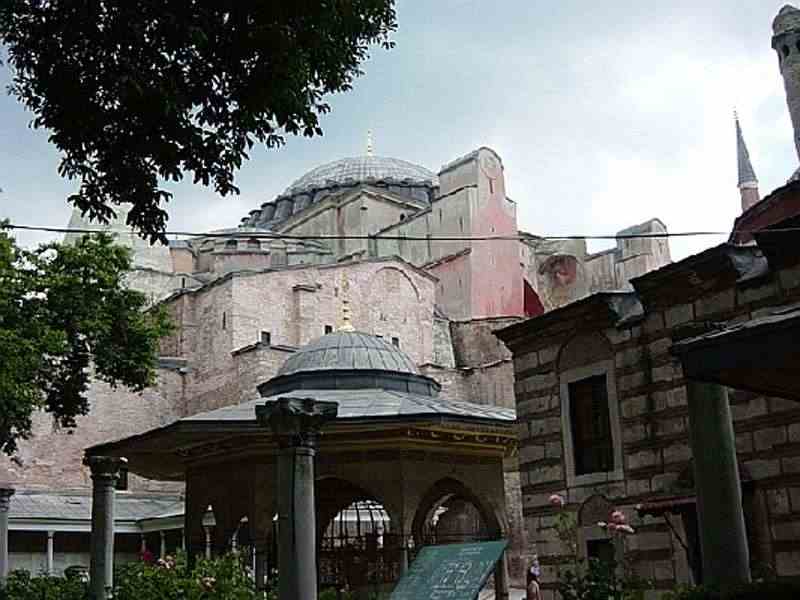

Inside Hagia Sophia.
The interior reveals the building's true magnificence, stunning even
today, it must have been overwhelming centuries ago when it was covered
with gilded mosaics.
After the Turkish conquest in 1453 and the subsequent conversion of
Hagia Sophia to a mosque, the mosaics were covered over, as Islam
prohibits images.
They
were not revealed until the 1930's when Ataturk declared Hagia Sophia a
museum. The minarets were added when Hagia Sophia was a mosque.
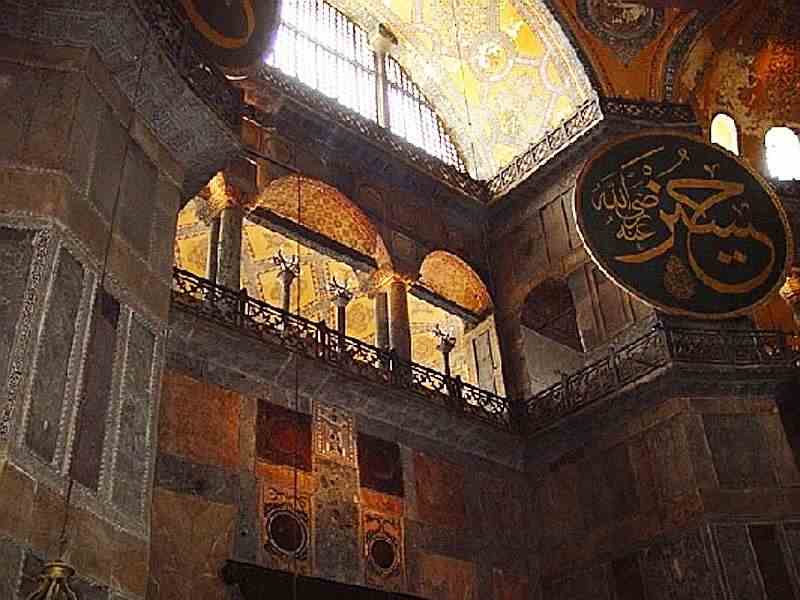
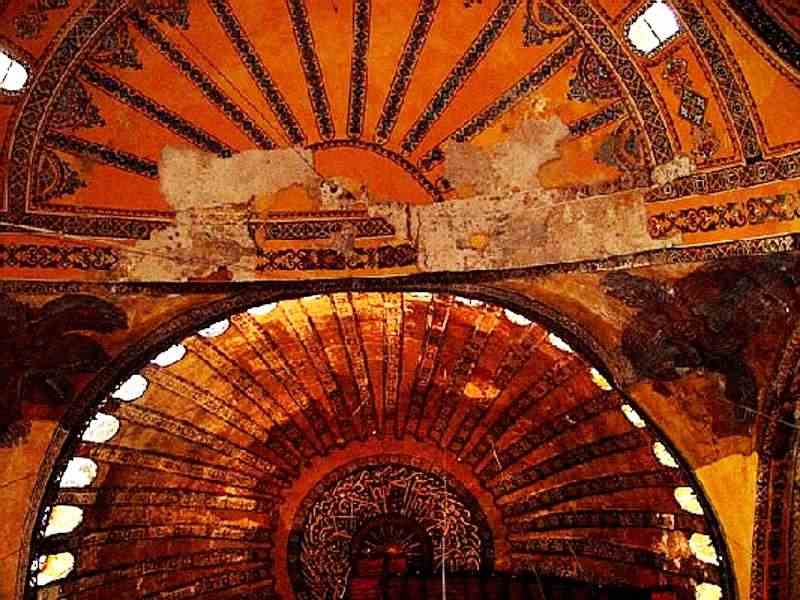

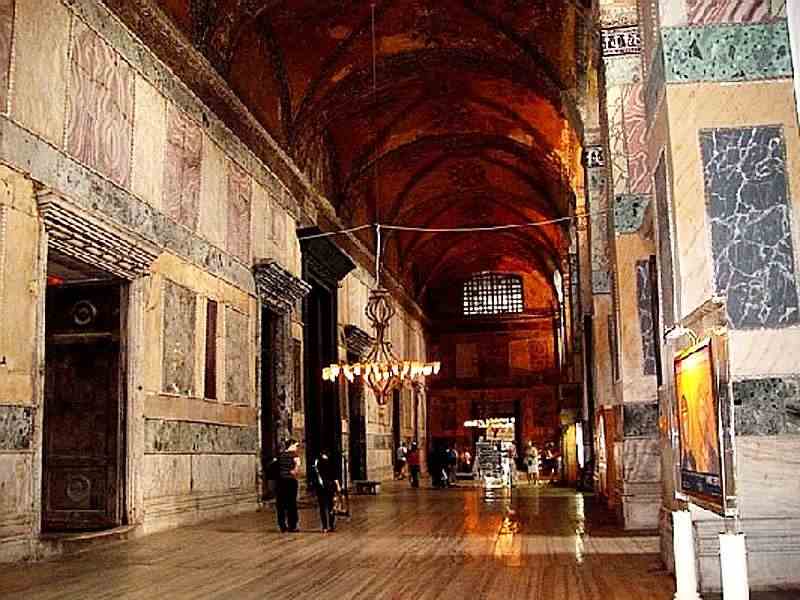

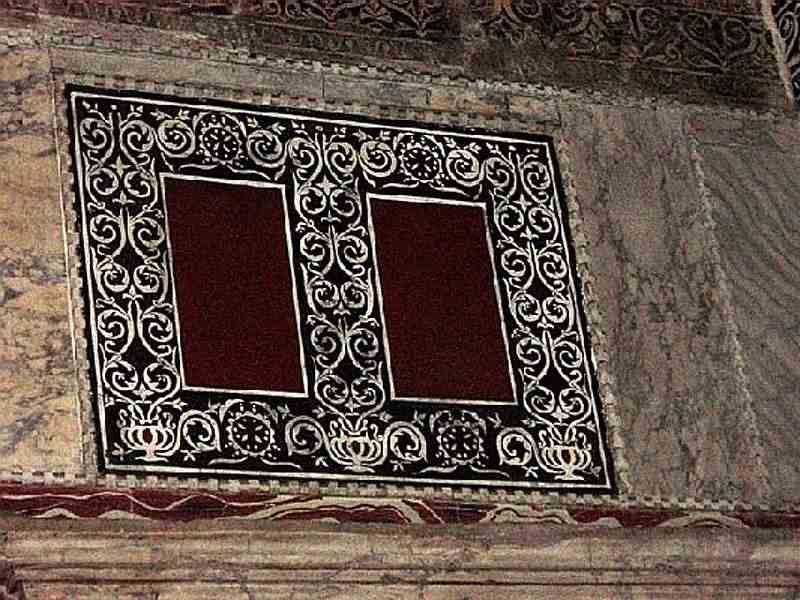

Hagia Sophia Cathedral remains an architectural wonder.
Its dome is supported by an extraordinary system of interlocking main
piers, secondary piers, buttress piers and spanning arches. It fell in
twice while being constructed.
While we
were there, interior restoration was being undertaken using scaffolding
as high as a 30 storey building.
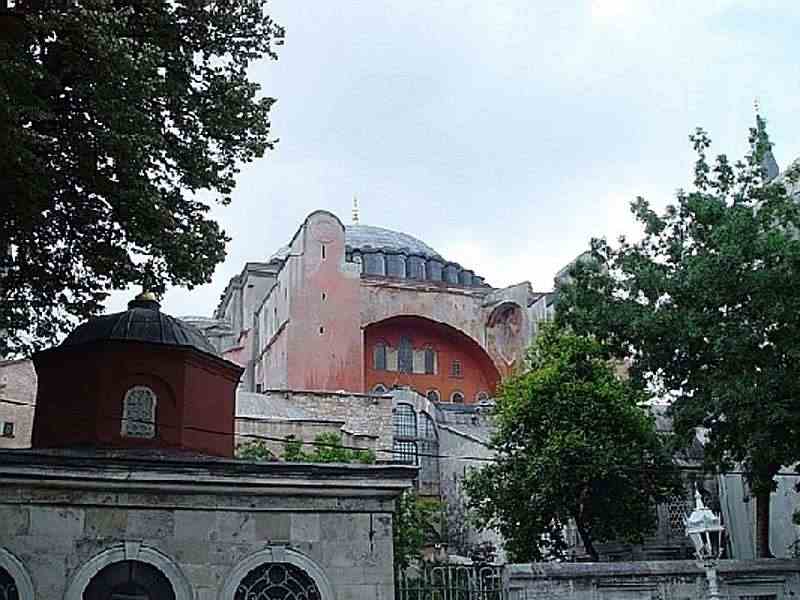
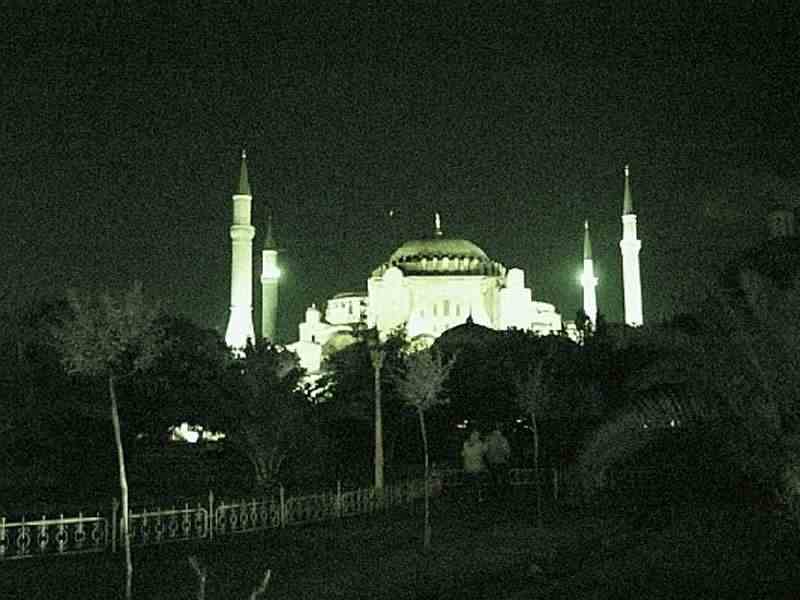
Topkapi Palace
The
palace of the Sultans from 1462. It was
completed in 1478.
Part of the palace, The
Treasury,
houses the Turkish Crown Jewels. There was a large 86 carat
diamond.
But the highlight was the biggest ruby that we have ever seen.
It was in a Sultan's headdress.
We also saw a jewelled encrusted cradle, medals, "the skull and arm of
John the Baptist" and daggers with emerald and quartz crystal handles.
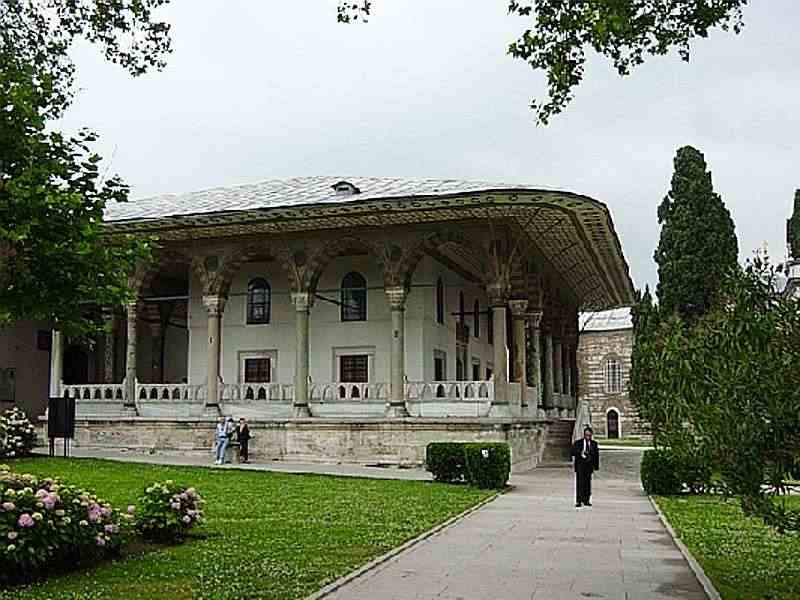


There were beautifully tiled rooms and attractive coloured
windows.
In another room we saw holy relics - "Mohammed's beard hairs and
footprints".
There
were portraits of Sultans from 1299 until 1922.
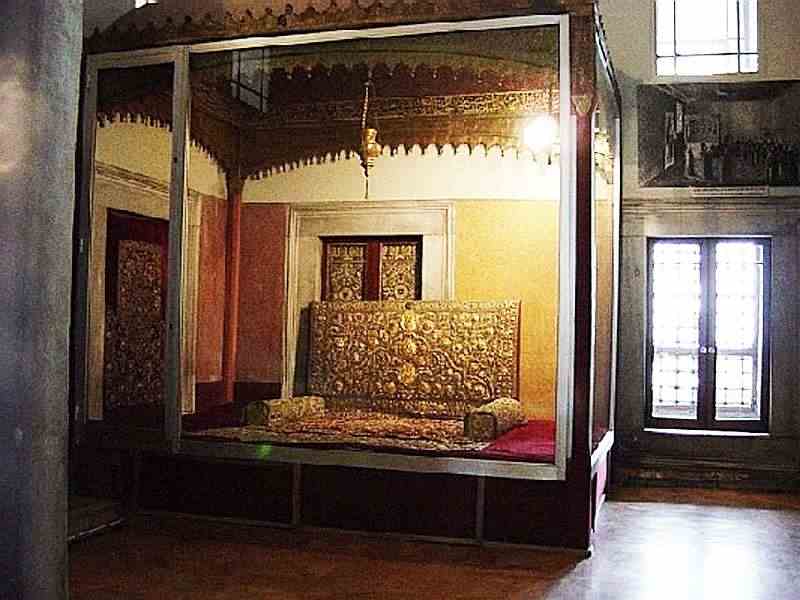

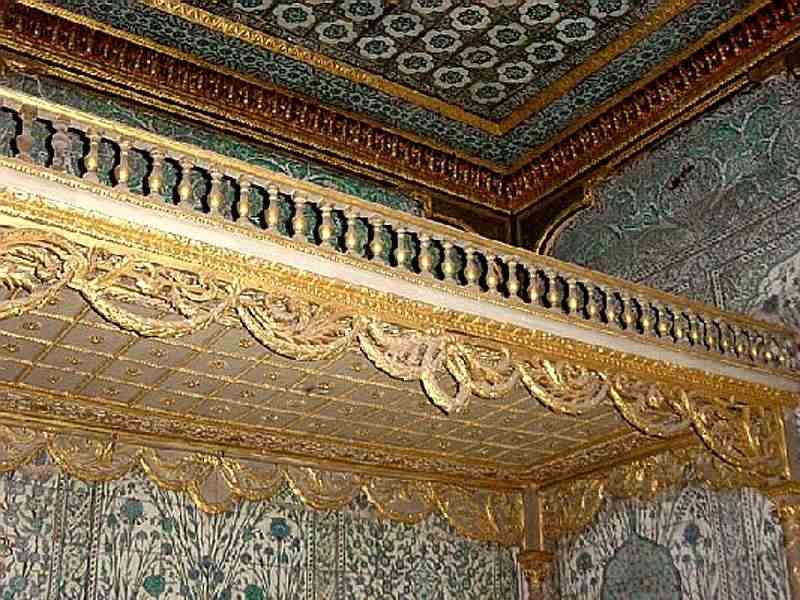
Intricate stonework in the pavement at
Topkapi Palace in Istanbul.
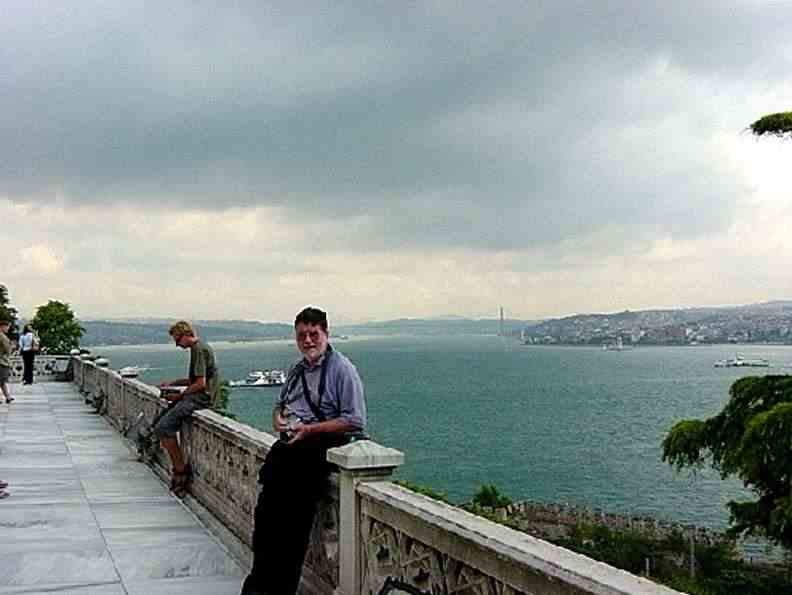
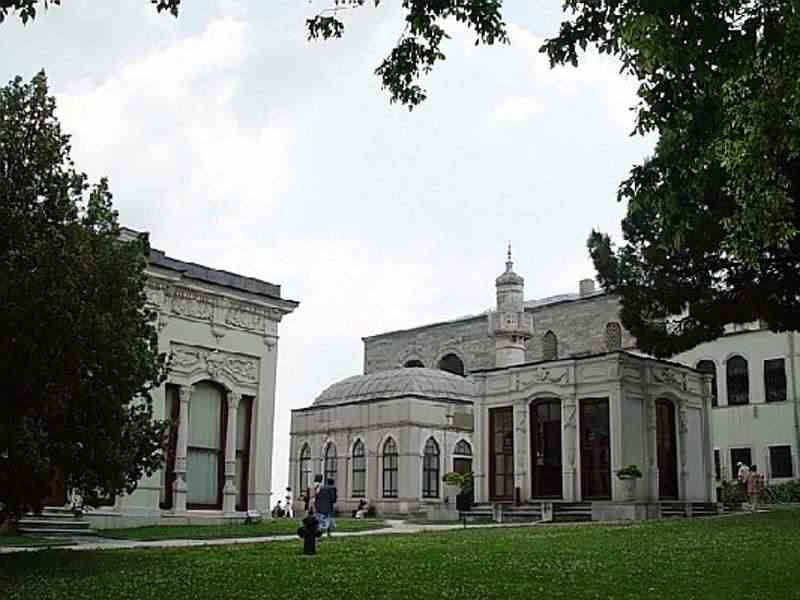
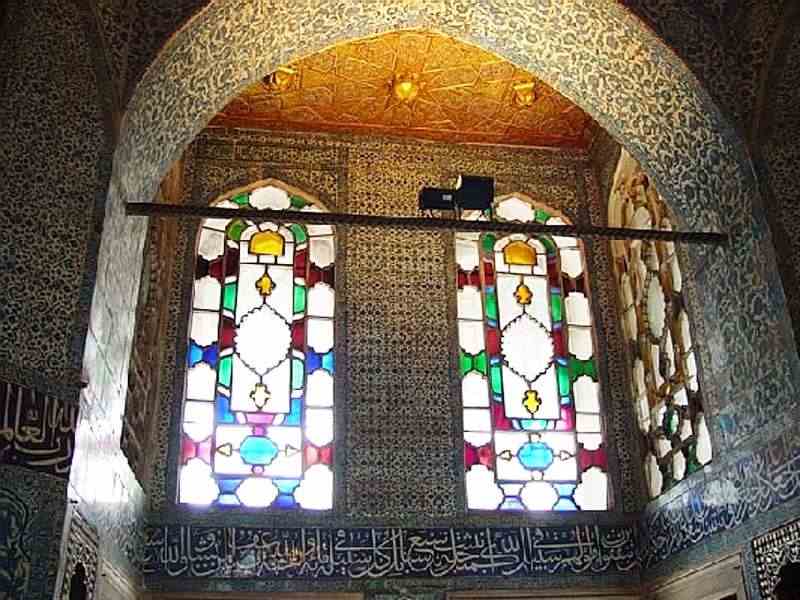
Attached to the harem was a large outdoor swimming pool as
well as a heated indoor pool.
There
were fountains outside the Sultan's meeting room. They prevented
outsiders from hearing the private discussions.
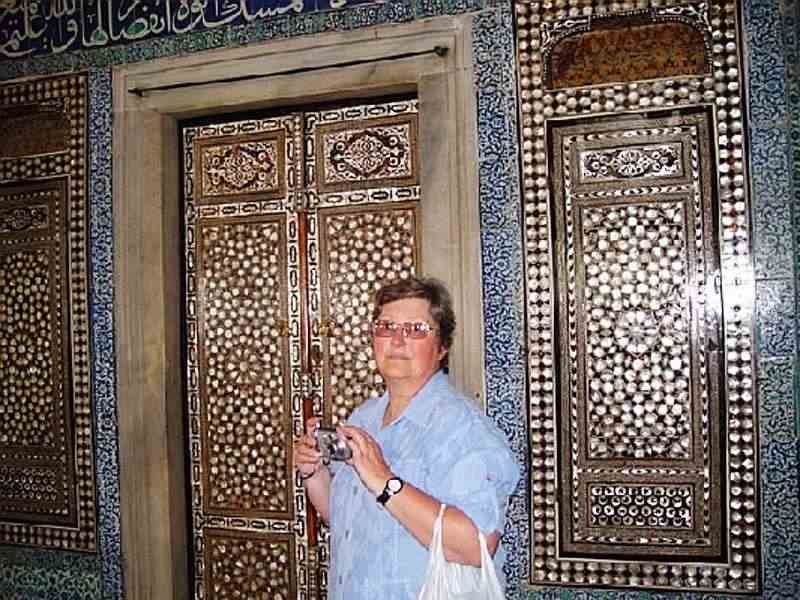
The Sultan used to sit under this Golden Canopy in the grounds of Topkapi Palace in Istanbul and view the ships and boats sailing on The Bosphorus.


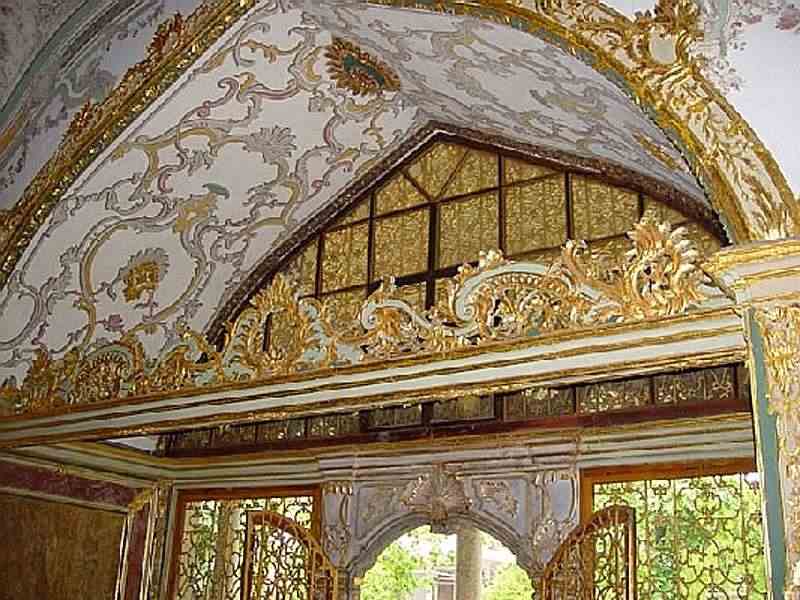
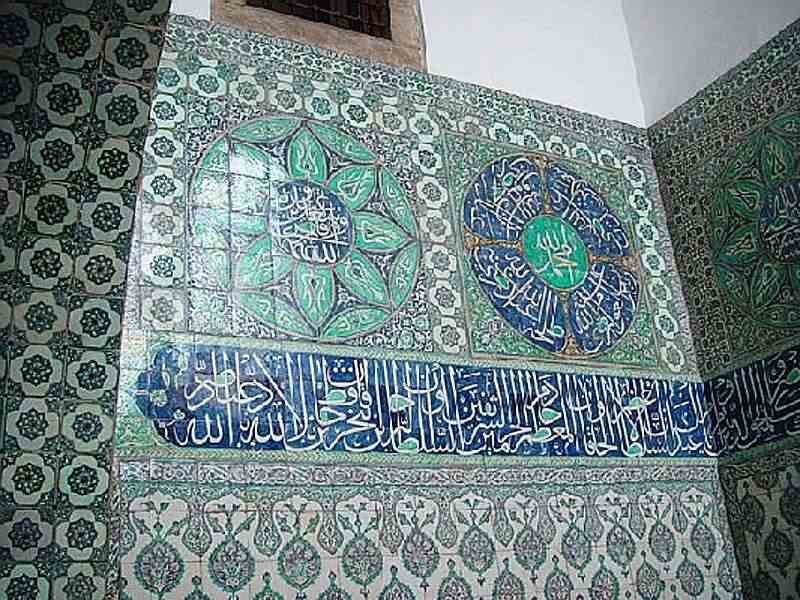
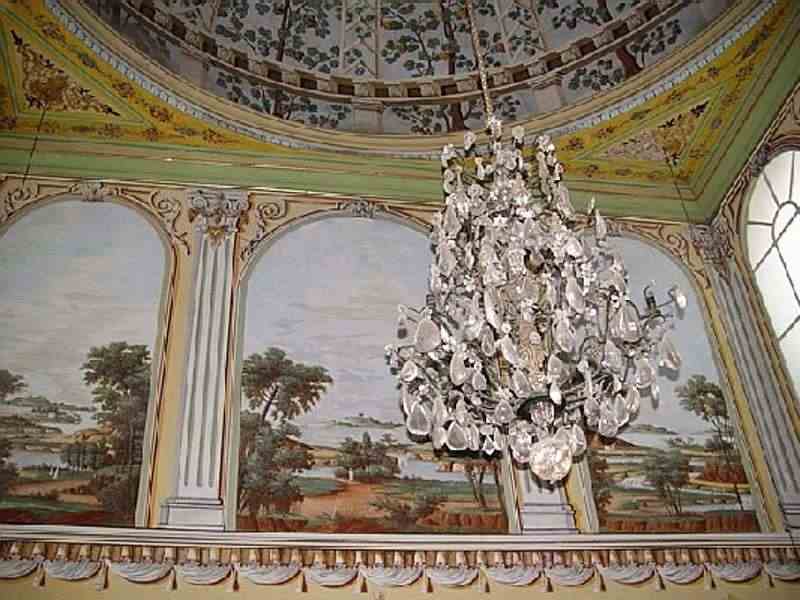

Inside The Harem at Topkapi Palace in Istanbul.
These were the rooms of the Sultan's family. The Sultan's mother had a
powerful control over the harem.
The eunuchs were black. They guarded the women of the harem.
Some of
the women never ever saw the Sultan.

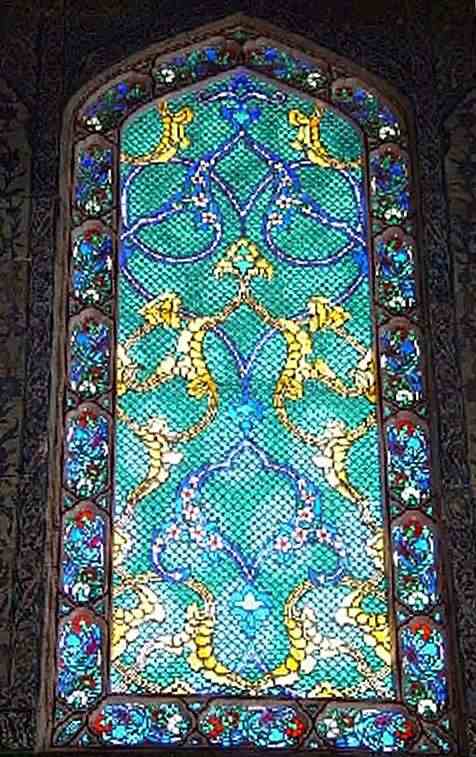
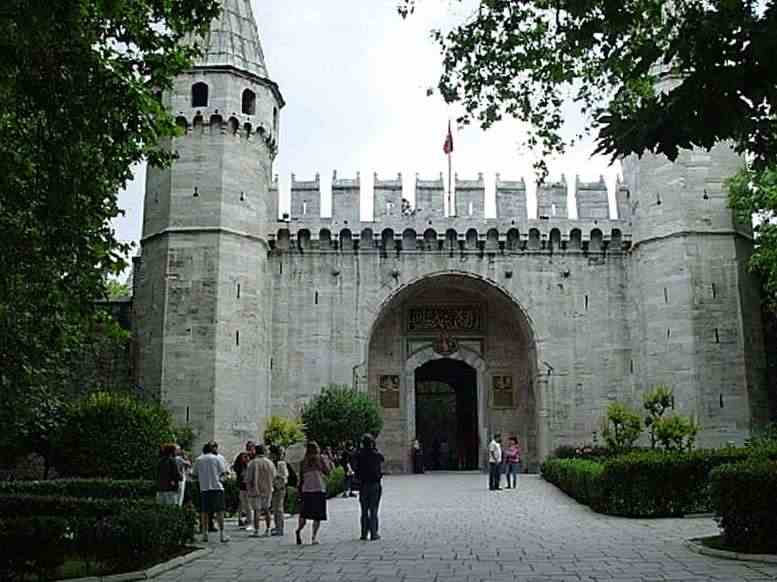
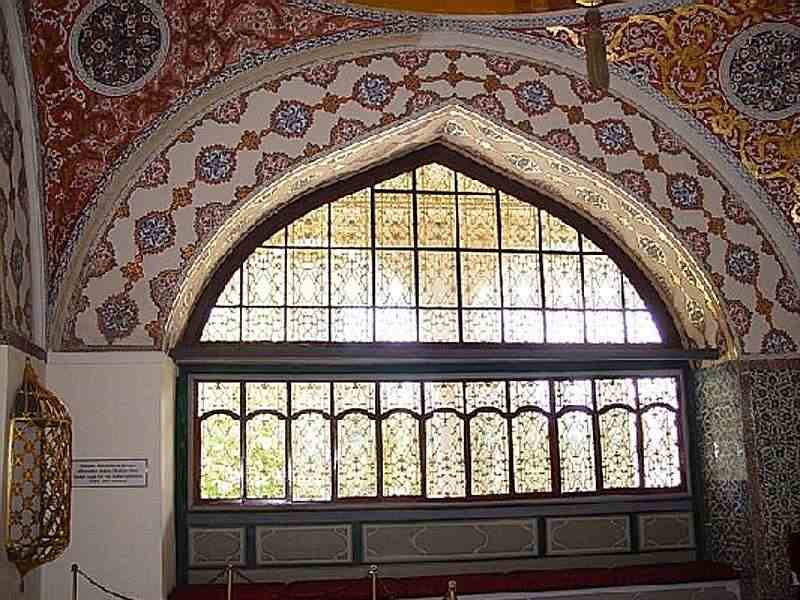
Suleyman
Mosque.
It is Istanbul's grandest and largest mosque. Construction was
completed in 1557 on the orders of Suleyman the Magnificent. He is
buried in a nearby mausoleum.
The
buildings surrounding the mosque were originally a hospital,
seminaries, soup kitchen, baths and hospice.
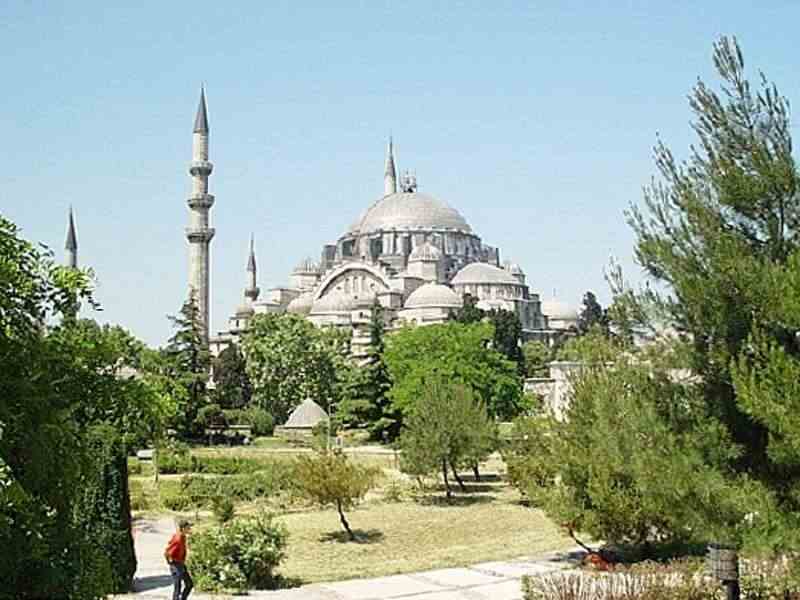
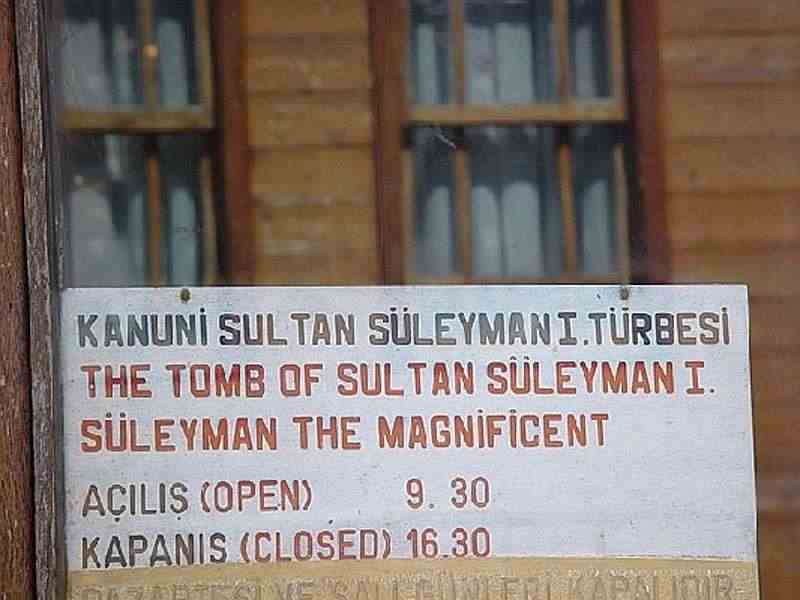
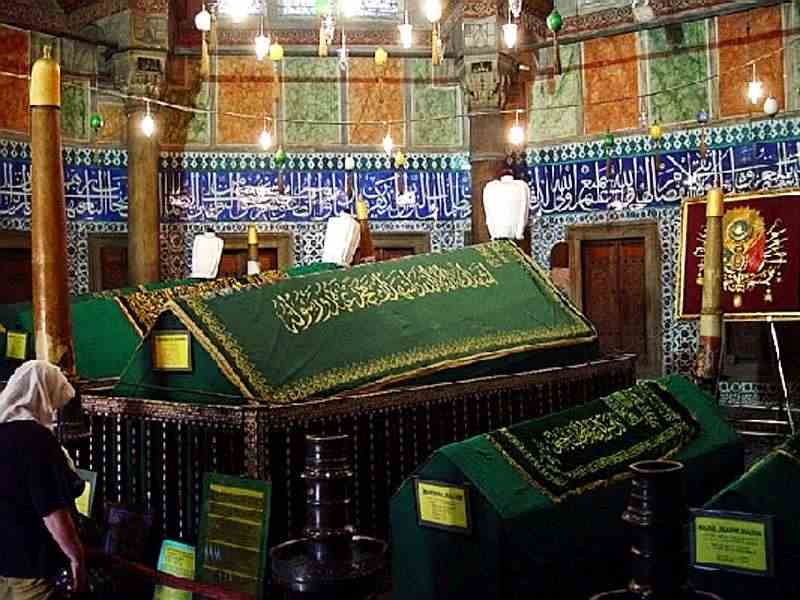

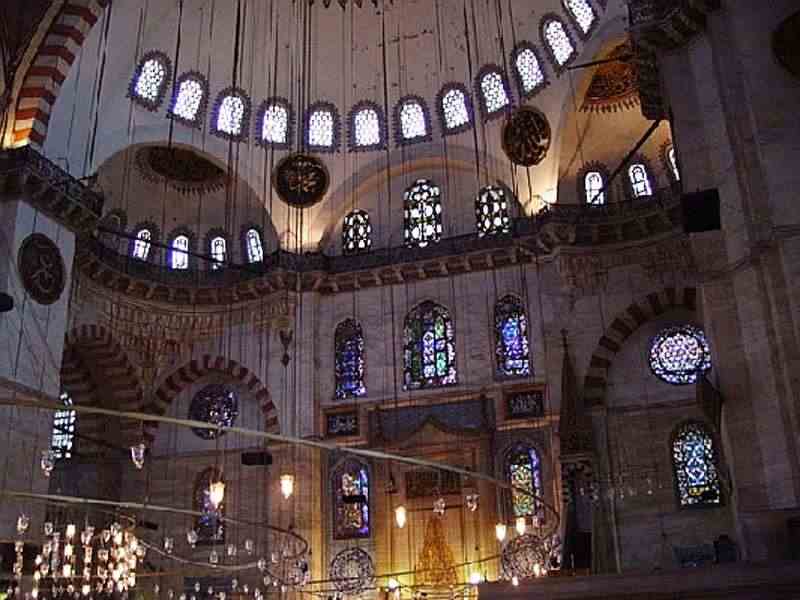
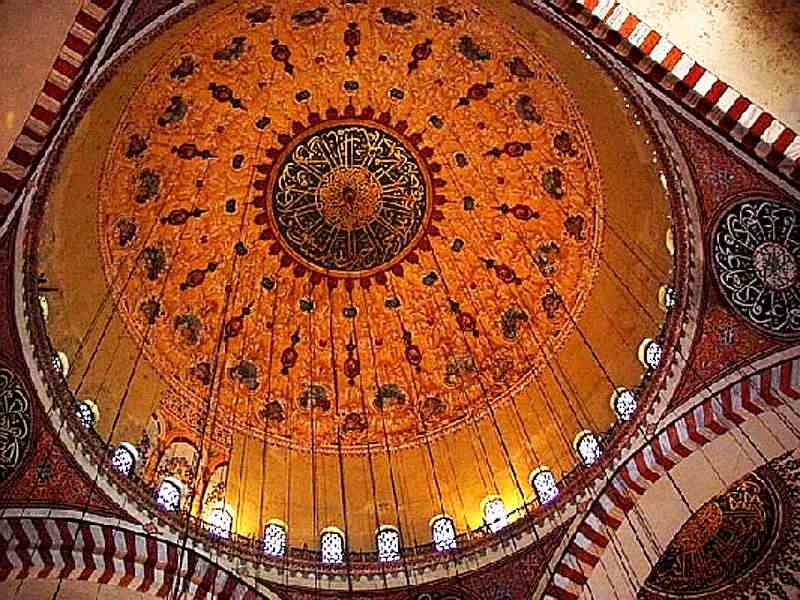

Beautiful, new Turkish carpet at Suleyman Mosque.
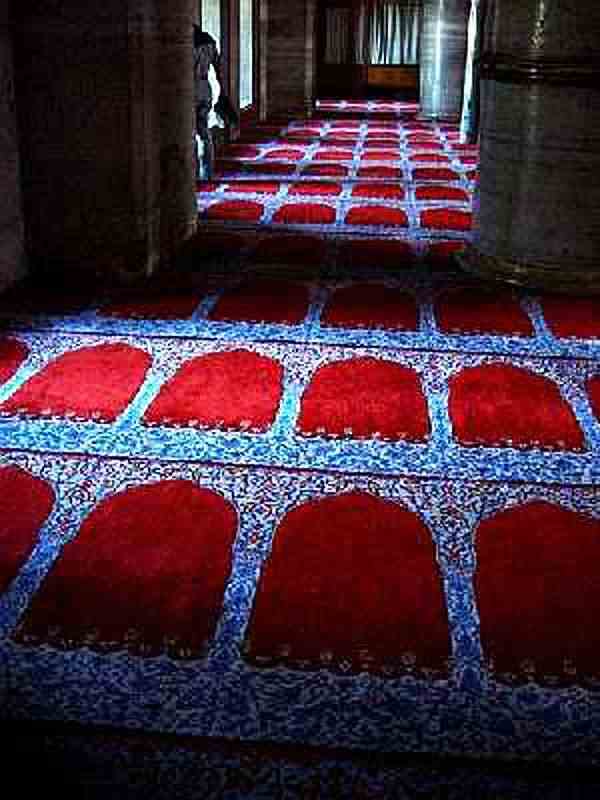
The Entrance Gate to the mosque grounds.
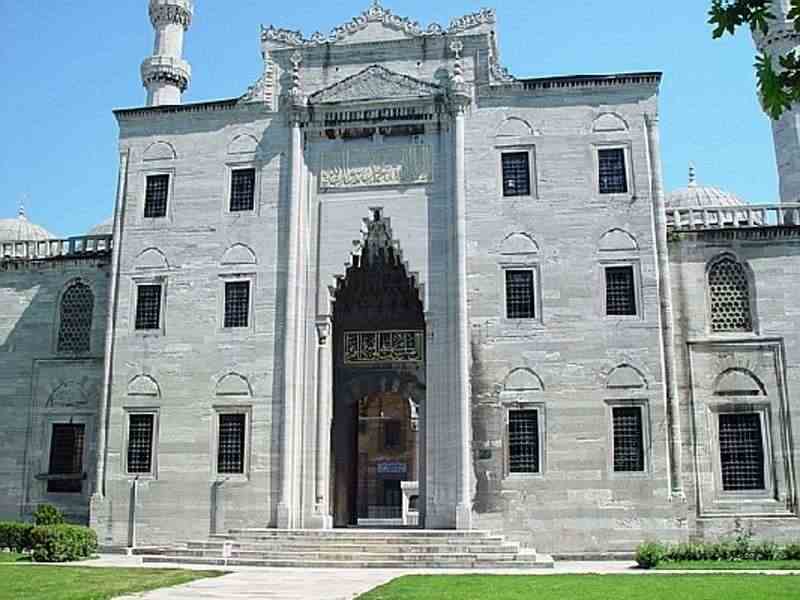
The Archaeological Museum was adjacent to Hagia Sophia..
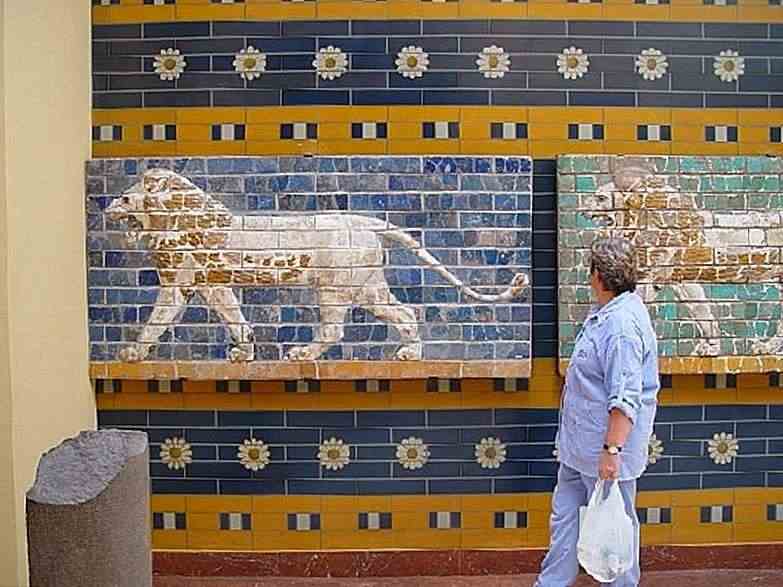

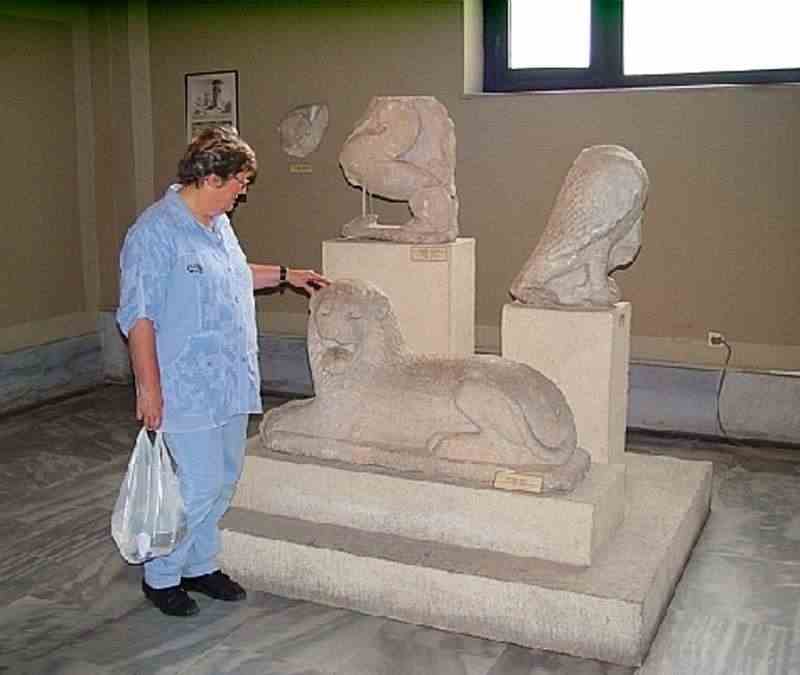
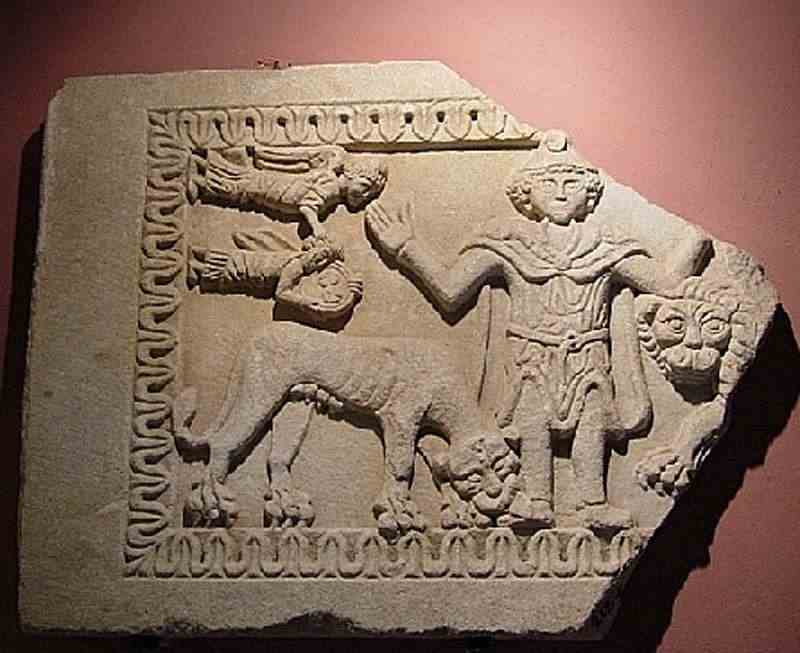

Breakfast on the terrace at our hotel, The Apricot Hotel.
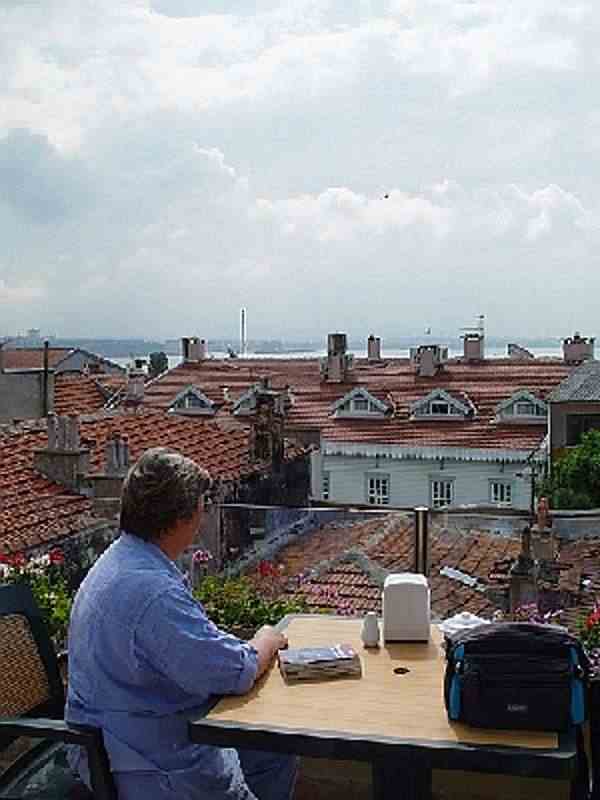
The Golden Horn, an inlet off The Bosphorus.
The Galata bridge crosses over it.
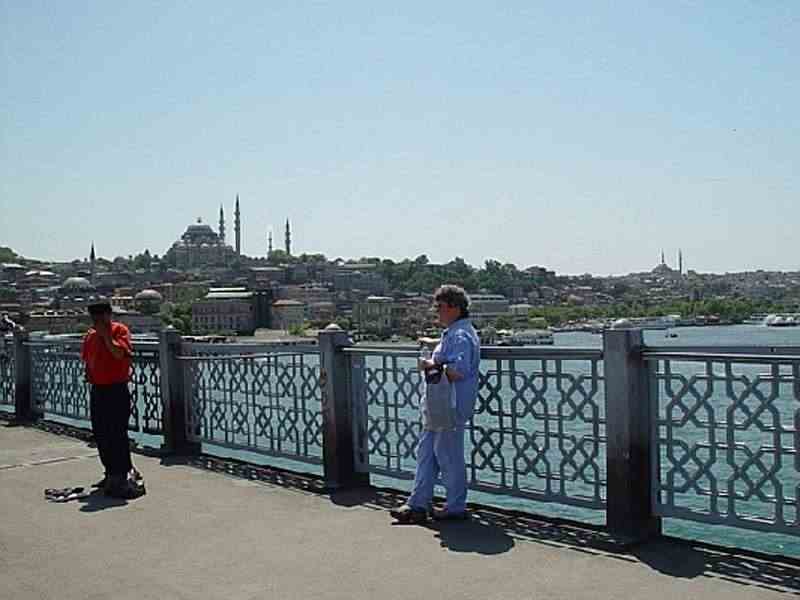
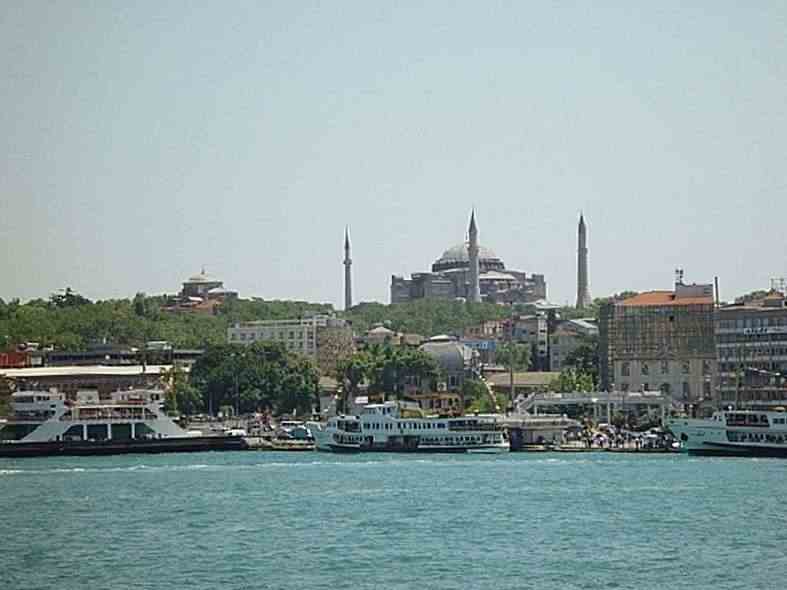
The Grand Bazaar
in Istanbul.
There
are over 4400 shops and 65 covered walkways.
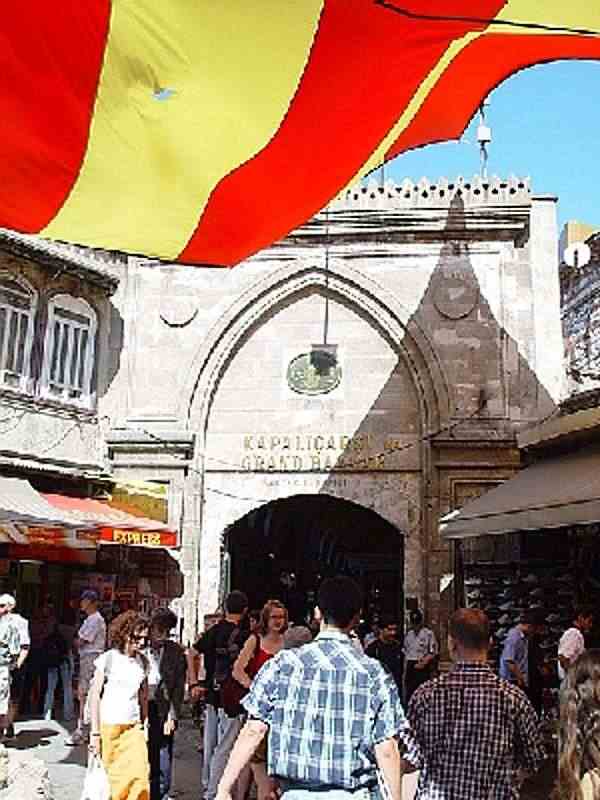

|
|
Yerebatan Saray, the underground sunken palace cistern in Istanbul. Built by Constantine, this massive, columned cistern held water not only for regular summer use but also for times of siege. |


